Country music, at its heart, is about storytelling. It’s the genre that paints vivid pictures with lyrics, resonates with raw emotion, and often carries a distinctive twang that moves you. From tales of heartbreak and hardship to celebrations of life and love, country songs map out the diverse experiences of American life. This genre has evolved significantly, from the early days of Hank Williams to the crossover appeal of artists like Shania Twain and the modern sounds of Beyoncé, yet the core elements of storytelling and emotional honesty remain.
In celebration of the enduring power of country music, and building upon a previous list, we present an expanded collection of 200 of the Best Country Songs. This list delves deeper into the rich history of the genre, highlighting aspects that might have been overlooked before. In a time where genres are blurring, and a classic folk song can top country charts, and artists like Beyoncé are spotlighting the contributions of Black artists to country music, it’s clear that the tradition continues to grow and redefine itself. This collection aims to capture the breadth and depth of country music, showcasing why these songs are considered among the best.
Brad Paisley, ‘Welcome to the Future’
 Brad Paisley performs at Sleep Train Amphitheatre on September 26, 2009 in Wheatland, California. (Image Credit: Tim Mosenfelder/Getty Images)
Brad Paisley performs at Sleep Train Amphitheatre on September 26, 2009 in Wheatland, California. (Image Credit: Tim Mosenfelder/Getty Images)
Brad Paisley, often recognized as mainstream country’s most prominent liberal voice, delivered an ambitious and expansive single with “Welcome to the Future” in 2009. This nearly six-minute track from the album American Saturday Night is a thoughtful exploration of progress and hope. Paisley himself described his intention as wanting to offer “a little multigenerational truth with a strong sense of hope and possibility.” The song marvels at modern technological advancements like car DVD players and mobile phone games, contemplating how such innovations might astound his grandfather, a WWII veteran. It then shifts to acknowledge racial progress within his own lifetime, a theme he notably debuted live at the White House. Musically, “Welcome to the Future” is quintessential Paisley, blending synth lines with traditional steel guitar, fiddle breaks with energetic guitar riffs, and thoughtful lyrics with heartfelt sentiment. It’s a song that reflects on change and progress with a characteristic Paisley blend of wit and earnestness, making it a standout in his catalog and a noteworthy country song of the era.
Stoney Edwards, ‘Hank and Lefty Raised My Country Soul’
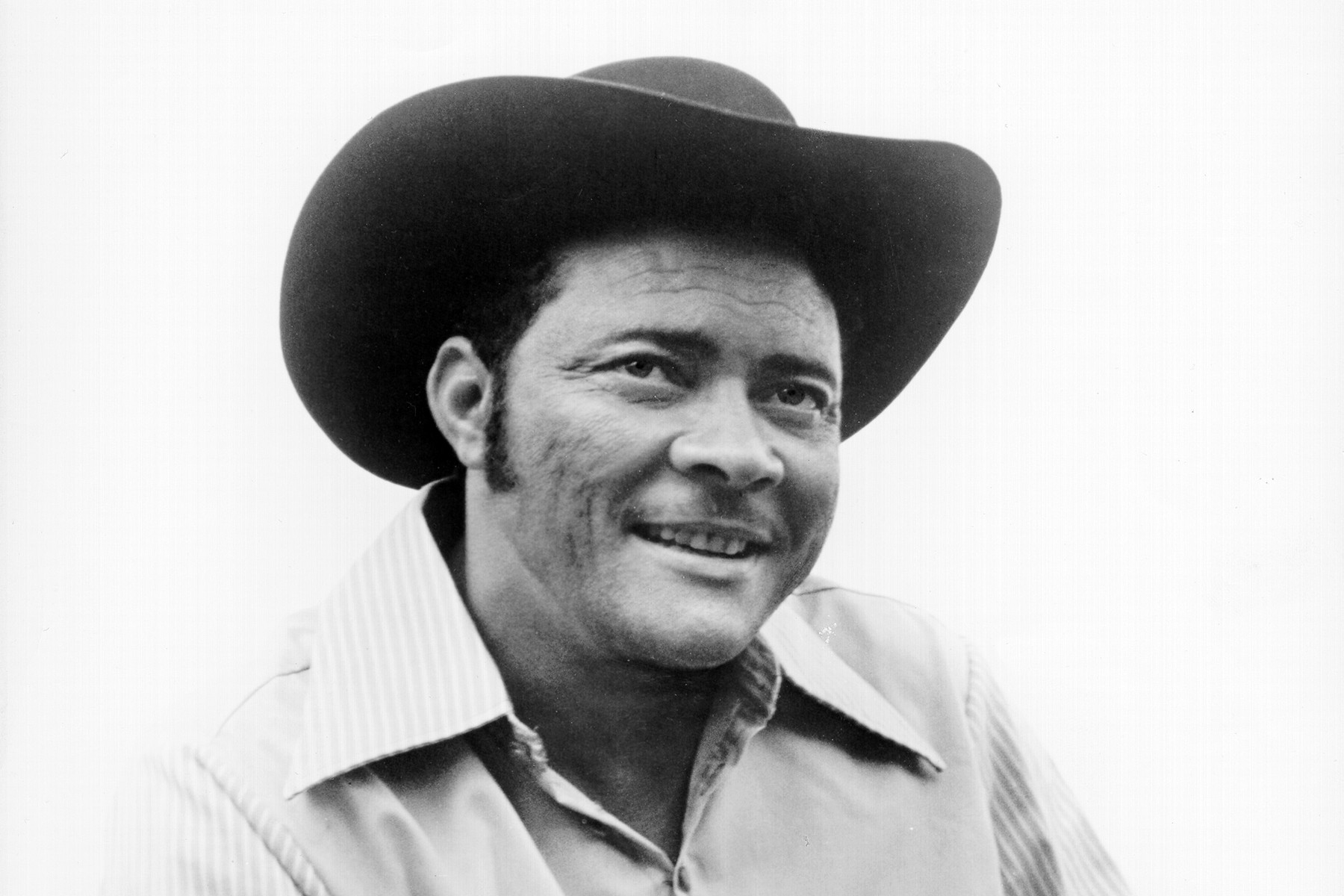 UNSPECIFIED – CIRCA 1970: Stoney Edwards, a Black country music artist, is pictured in a circa 1970 publicity portrait. (Image Credit: Michael Ochs Archives/Getty Images)
UNSPECIFIED – CIRCA 1970: Stoney Edwards, a Black country music artist, is pictured in a circa 1970 publicity portrait. (Image Credit: Michael Ochs Archives/Getty Images)
Stoney Edwards holds an important place in country music history as one of the Black artists who gained prominence after Charley Pride broke through the industry’s color barrier. His song “Hank and Lefty Raised My Country Soul” is a poignant reflection on his musical upbringing, paying homage to genre pioneers Hank Williams and Lefty Frizzell. This song serves as a powerful, if somewhat frustrating, reminder of the additional burden faced by Black artists in country music during that era. They often needed to explicitly emphasize their country music credentials in ways that their white counterparts typically did not. Despite this context, “Hank and Lefty Raised My Country Soul” is undeniably a remarkable record. The song’s arrangement cleverly weaves together the sounds of Williams’ Drifting Cowboys and Frizzell’s Western Cherokees, creating a rich and familiar soundscape. However, Edwards’ distinctive warm Oklahoma twang is what truly sets the song apart, marking it as uniquely his. The narrative of the song, about embracing his father’s musical heroes rather than rebelling against them, beautifully embodies the essence of country music tradition, making it a significant and deeply resonant song.
Loretta Lynn and Conway Twitty, ‘You’re the Reason Our Kids Are Ugly’
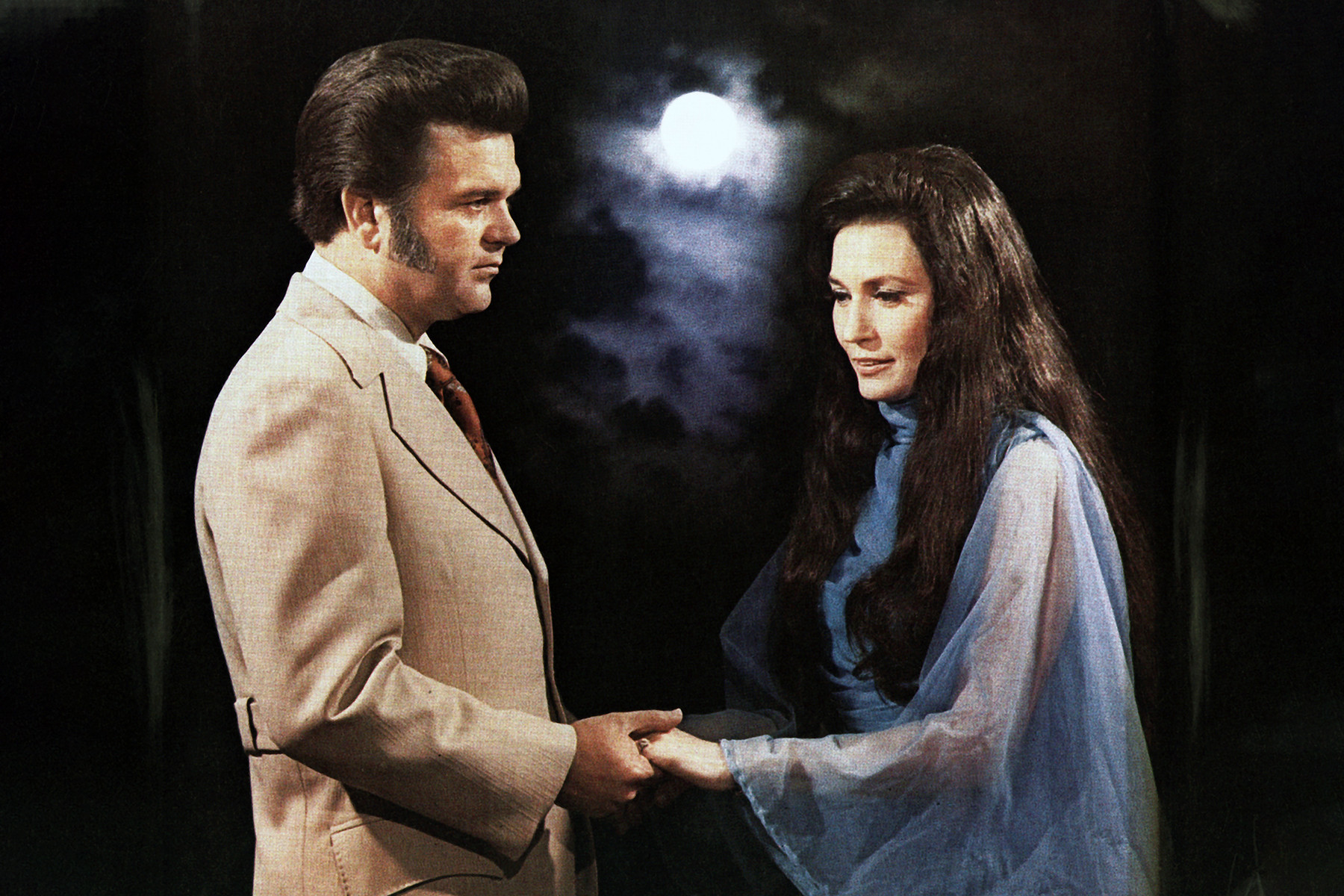 CIRCA 1979: Country music legends Loretta Lynn and Conway Twitty are photographed in a portrait taken around 1979. (Image Credit: Michael Ochs Archives/Getty Images)
CIRCA 1979: Country music legends Loretta Lynn and Conway Twitty are photographed in a portrait taken around 1979. (Image Credit: Michael Ochs Archives/Getty Images)
The 1970s were a golden age for country music power couples, with iconic duos like George Jones and Tammy Wynette, and Johnny Cash and June Carter Cash, dominating the charts. However, arguably the most captivating duo wasn’t even a romantic pairing: Loretta Lynn and Conway Twitty. Their collaboration began explosively, with five consecutive Number One hits early in the decade, and their partnership remained a consistent source of chart-topping music. By the time they released “You’re the Reason Our Kids Are Ugly,” they were already established legends, yet this song stands out as perhaps their most unusual and definitely their funniest contribution to the country music canon. “You’re the Reason Our Kids Are Ugly” is a delightfully funky and comedic toe-tapper, maintaining a lighthearted pace throughout. Neither Lynn nor Twitty takes the song seriously for a moment, fully committing to the playful banter as they jokingly list reasons why the other has aged poorly and supposedly tainted their shared gene pool. This playful self-deprecation, combined with their undeniable musical chemistry, makes it a uniquely entertaining and memorable country duet.
Gretchen Wilson, ‘Redneck Woman’
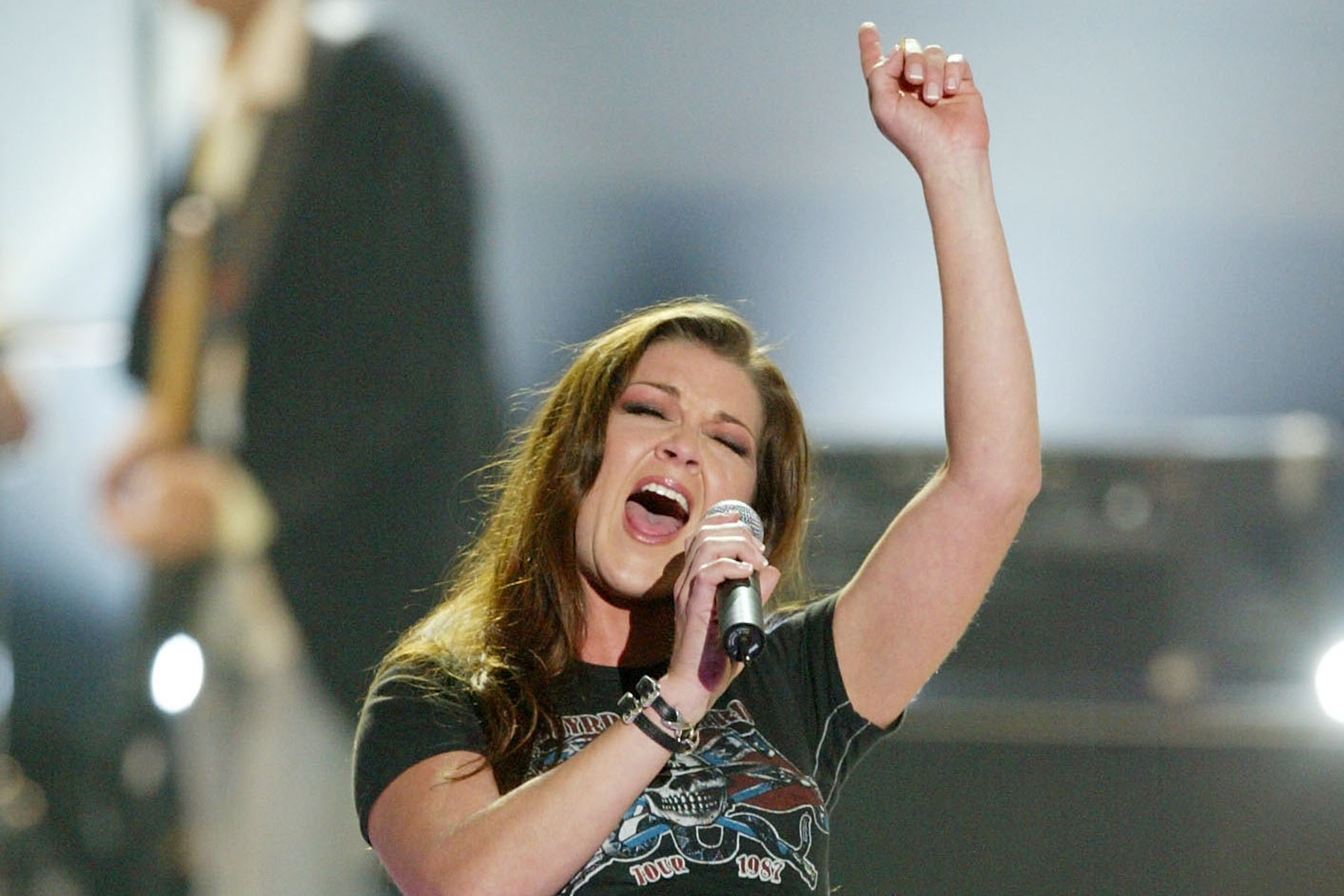 LAS VEGAS – MAY 26: Gretchen Wilson performs live on stage at the concert venue in Las Vegas, Nevada on May 26. (Image Credit: Kevin Winter/Getty Images)
LAS VEGAS – MAY 26: Gretchen Wilson performs live on stage at the concert venue in Las Vegas, Nevada on May 26. (Image Credit: Kevin Winter/Getty Images)
The MuzikMafia, originally a collective of Nashville’s outcasts and musical rebels known for their inclusive open mic nights, unexpectedly broke into the mainstream with two major hits: Big & Rich’s “Save a Horse (Ride a Cowboy)” and Gretchen Wilson’s anthemic “Redneck Woman.” With its infectious upbeat swing and unapologetic celebration of beer-drinking, Walmart-shopping, and “redneck” identity, “Redneck Woman” quickly climbed the country charts. Following a pivotal performance at the 2004 Country Radio Seminar, the song achieved unprecedented success, becoming the fastest-rising Number One single since Billy Ray Cyrus’ “Achy Breaky Heart.” While Wilson herself struggled to replicate the massive success of “Redneck Woman” in her subsequent career, the song’s impact was undeniable. It effectively paved the way for a new wave of rocking female artists in country music, opening doors for “badass” women like Miranda Lambert and Kimberly Perry, who embraced a similarly assertive and independent persona. “Redneck Woman” remains a defining anthem of early 2000s country and a testament to the power of embracing one’s roots.
Gene Autry, ‘Back in the Saddle Again’
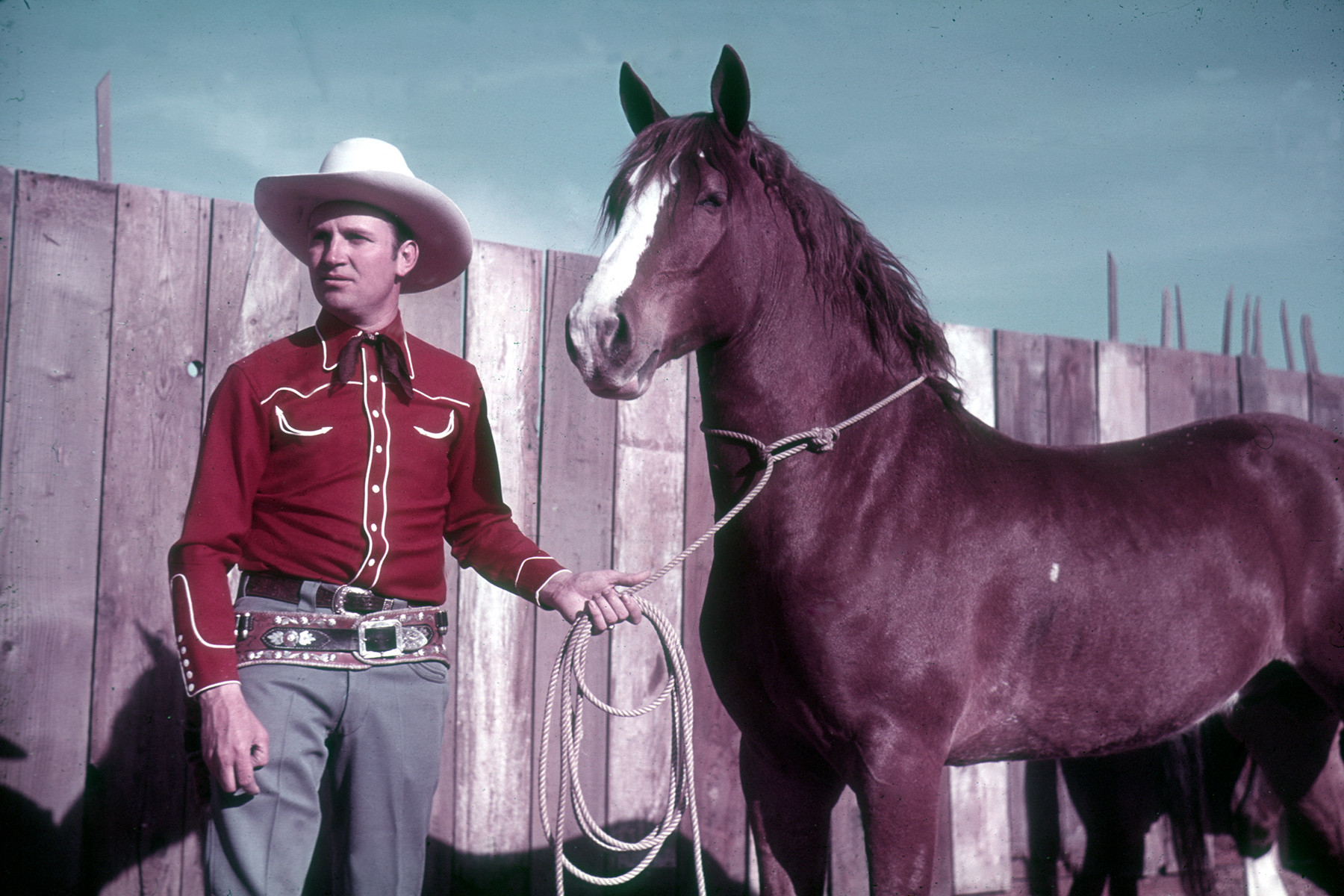 LOS ANGELES – CIRCA 1940: Gene Autry, the singing cowboy, poses with his horse Champion in Los Angeles, California, circa 1940. (Image Credit: Ivan Dmitri/Michael Ochs Archives/Getty Images)
LOS ANGELES – CIRCA 1940: Gene Autry, the singing cowboy, poses with his horse Champion in Los Angeles, California, circa 1940. (Image Credit: Ivan Dmitri/Michael Ochs Archives/Getty Images)
According to the authoritative book Country Music U.S.A. by Bill C. Malone and Tracy W. Laird, Gene Autry “completed the ‘romantic westernizing’ begun by [Roy] Rogers.” In fact, Autry’s early career as a singer largely involved performing songs originally made popular by Rogers. However, Gene Autry possessed his own unique and affable charm, which translated seamlessly to both the silver screen and record sales. By the time “Back in the Saddle Again” emerged, Autry had already been a major star for years. This iconic song was a last-minute addition to the 1938 movie Border G-Man. Songwriter Ray Whitley received a 5 a.m. call requesting a new song by 8 a.m. Inspiration struck when Whitley told his wife about the call, saying, “Well, I’m back in the saddle again.” Her simple response, “Well, you’ve got a good title,” sparked the creation of a classic. Autry recorded “Back in the Saddle Again” numerous times, with the 1939 version becoming his second gold record. The song became his signature theme song and the title of his autobiography. It’s a song that perfectly encapsulates the romanticized image of the American West and cemented Autry’s legacy as a true icon of country and Western music.
Brandi Carlile, ‘The Joke’
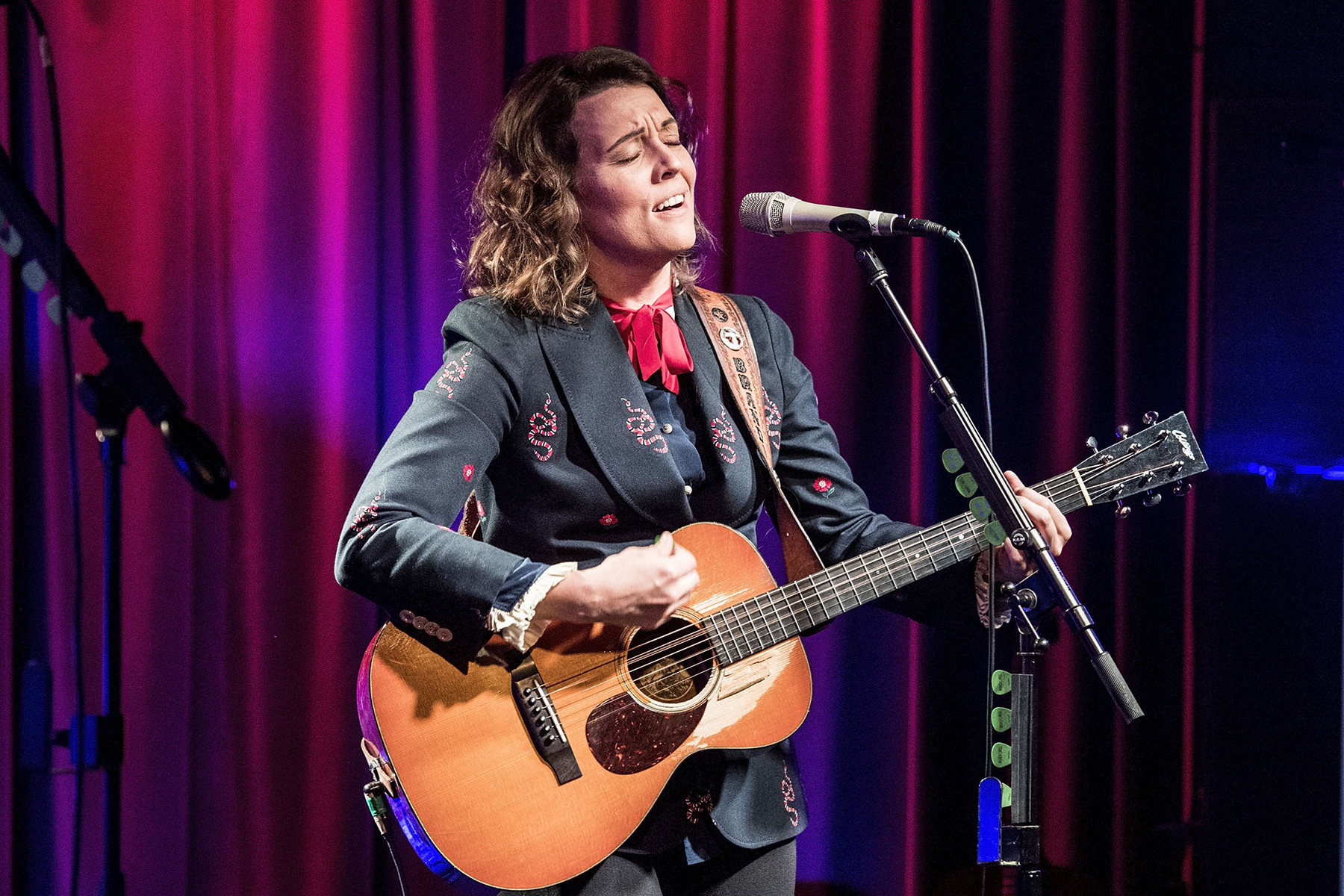 LOS ANGELES, CA – JULY 12: Brandi Carlile performs at The GRAMMY Museum in Los Angeles, California on July 12, 2018. (Image Credit: Timothy Norris/Getty Images)
LOS ANGELES, CA – JULY 12: Brandi Carlile performs at The GRAMMY Museum in Los Angeles, California on July 12, 2018. (Image Credit: Timothy Norris/Getty Images)
Brandi Carlile’s “The Joke” is not just her best song; it’s a towering anthem featuring one of the most powerful vocal performances in 21st-century country music. This stirring track resonates deeply, giving voice to marginalized and minority groups who experienced heightened anxieties and fears during the Donald Trump presidency. Carlile’s soaring vocals, amplified by the empathetic production of Dave Cobb and Shooter Jennings, embody the collective pain, anger, and desperation of that era. “The Joke” quickly became a show-stopping centerpiece of her live performances, earning Carlile well-deserved Grammy Awards. While it possesses all the hallmarks of a standard, its raw emotional intensity and Carlile’s unparalleled delivery make it difficult to imagine any other singer capturing its essence with the same profound impact. It stands as a powerful testament to Carlile’s artistry and a poignant reflection of a significant period in contemporary American history.
Zach Bryan, ‘Something in the Orange’
 Zach Bryan, photographed for Rolling Stone, is featured as one of the best country artists. (Image Credit: Griffin Lotz for Rolling Stone)
Zach Bryan, photographed for Rolling Stone, is featured as one of the best country artists. (Image Credit: Griffin Lotz for Rolling Stone)
Zach Bryan took an unconventional path to country music stardom, bypassing the traditional Nashville route of bar gigs and label showcases. Instead, he enlisted in the Navy and dedicated his off-duty hours to songwriting and sharing his music on YouTube. He independently released two albums while still in active service, building a dedicated fanbase through his raw and authentic sound. Following an honorable discharge and signing with a major label, Bryan released “Something in the Orange” in 2022 as the lead single from his album American Heartbreak. This song perfectly encapsulates what makes Zach Bryan unique: simple, uncluttered instrumentation that puts his poetic and emotionally resonant lyrics at the forefront, delivered in his urgent, plainspoken voice. “Something in the Orange” became a massive hit, proving that unadorned authenticity could resonate with a vast audience in the 2020s. It propelled Zach Bryan to the forefront of not just country music, but music in general, establishing him as one of the biggest and most important acts across genres.
The Oak Ridge Boys, ‘Elvira’
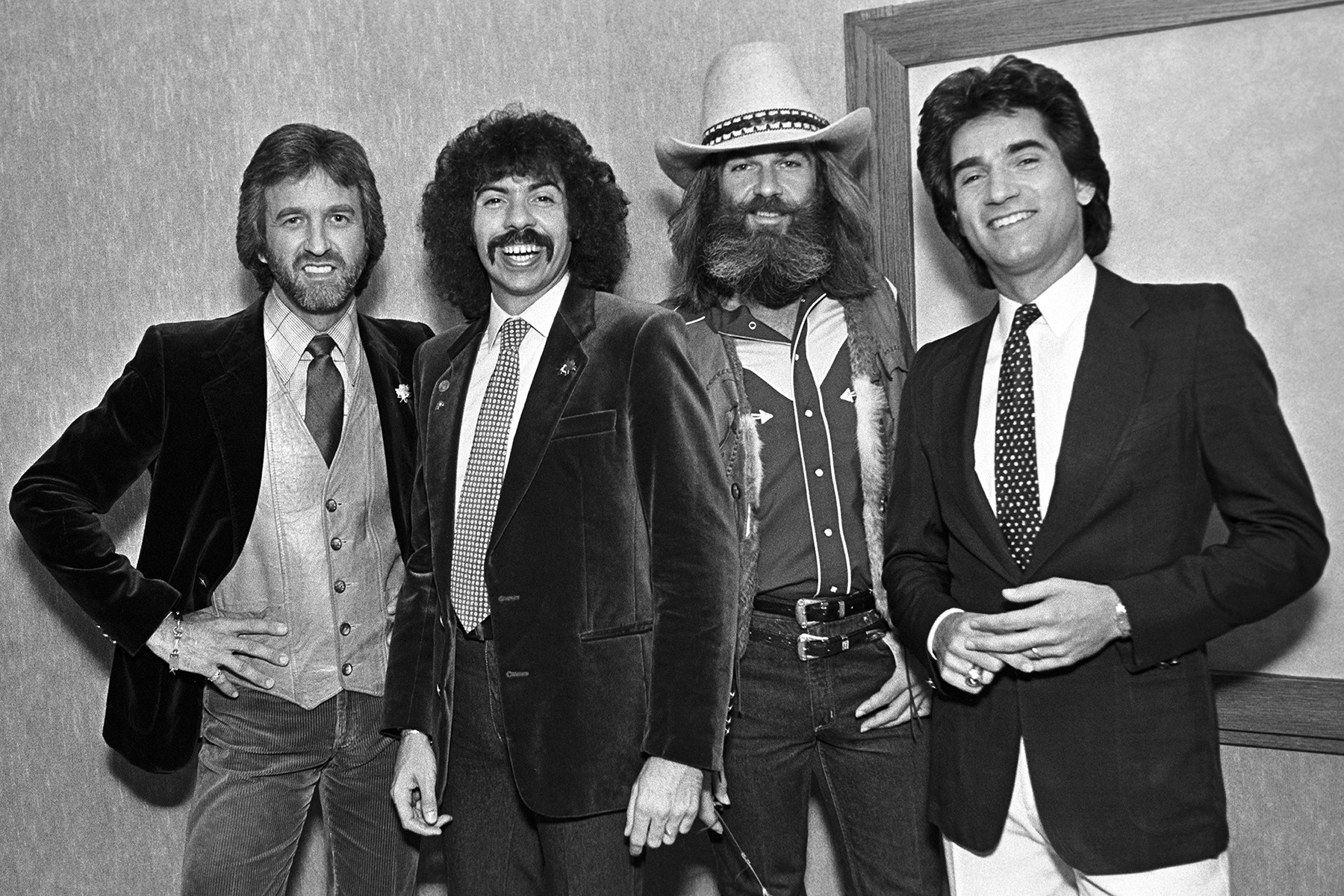 The Oak Ridge Boys are pictured backstage at Holiday Star in Chicago, Illinois, on May 25, 1981. (Image Credit: Kirk West/Getty Images)
The Oak Ridge Boys are pictured backstage at Holiday Star in Chicago, Illinois, on May 25, 1981. (Image Credit: Kirk West/Getty Images)
The Oak Ridge Boys have a history stretching back to the 1940s, originating in Knoxville, Tennessee, as the Oak Ridge Quartet, singing gospel music. They successfully transitioned into country music in the 1970s and 1980s while retaining the classic vocal group tradition. The Oaks were known for their polished yet approachable image and their musically versatile outlook, which allowed for seamless crossover into pop. This included collaborations with artists outside of country, such as their subtle and beautiful contribution to Paul Simon’s “Slip Slidin’ Away.” Their biggest pop moment came with “Elvira,” a song characterized by its jovial rhythm, prominent horn section, and incredibly catchy and singable hook: “Giddy up, um-poppa-um-poppa, mow, mow,” delivered with distinctive deep bass vocals by Camden, New Jersey, native Richard Sterban. “Elvira” became a cultural phenomenon, showcasing the Oak Ridge Boys’ ability to blend country and pop sensibilities into a uniquely appealing sound.
Beyoncé, ‘Texas Hold ‘Em’
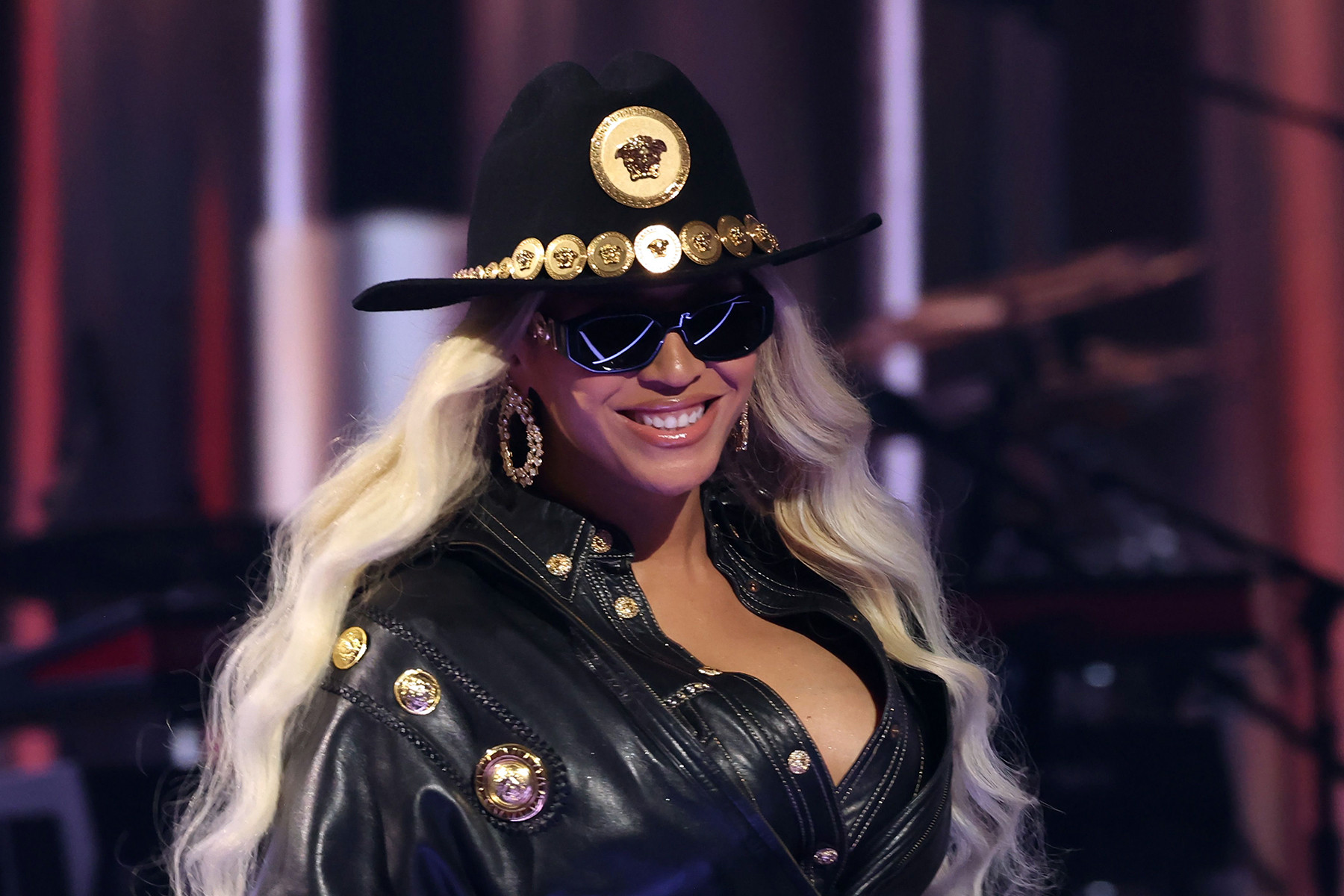 LOS ANGELES, CALIFORNIA – APRIL 01: Beyoncé accepts the Innovator Award onstage during the 2024 iHeartRadio Music Awards in Los Angeles. (Image Credit: Kevin Mazur/Getty Images for iHeartRadio)
LOS ANGELES, CALIFORNIA – APRIL 01: Beyoncé accepts the Innovator Award onstage during the 2024 iHeartRadio Music Awards in Los Angeles. (Image Credit: Kevin Mazur/Getty Images for iHeartRadio)
Released in February 2024, Beyoncé’s “Texas Hold ‘Em” has already become a landmark song, signaling a potential shift in the country music landscape. It achieved immediate historical significance by becoming the first song by a Black woman to debut at the top of the Billboard Hot Country Songs chart. The question now is whether its impact will extend further, potentially fostering greater integration within country radio and the broader genre. Will it spark a resurgence in line dancing, or perhaps trigger a backlash from traditionalists? The answer is still unfolding. What is undeniable is the song’s musical excellence. From Rhiannon Giddens’ opening banjo riff, to the distinctive bareback Western beat, and the fife-and-drum-inspired whistle breakdowns, “Texas Hold ‘Em” is a quintessential 21st-century country banger. Beyoncé has crafted a track that is both authentically country and undeniably modern, pushing boundaries and challenging genre conventions in exciting ways.
Johnny Rodriguez, ‘Ridin’ My Thumb to Mexico’
 IN CONCERT – Shoot Date: January 29, 1975: Johnny Rodriguez performs live in concert, circa 1975. (Image Credit: ABC Photo Archives/Disney General Entertainment Content via Getty Images) JOHNNY RODRIGUEZ
IN CONCERT – Shoot Date: January 29, 1975: Johnny Rodriguez performs live in concert, circa 1975. (Image Credit: ABC Photo Archives/Disney General Entertainment Content via Getty Images) JOHNNY RODRIGUEZ
Johnny Rodriguez holds a pioneering position as the first country music star of Mexican-American descent. He demonstrated the inherent fluidity of the genre by recording songs in both English and Spanish, recognizing the shared storytelling traditions between Mexican and country music. As he explained in Ken Burns’ Country Music documentary, “You have stories in Mexican music, and country music said almost the same thing, just in different languages.” His 1973 single, “Ridin’ My Thumb to Mexico,” perfectly exemplifies this storytelling tradition. It’s a poignant and melancholic weeper, penned solely by Rodriguez, about escaping troubles by disappearing into another country. The deep forlornness in his voice is beautifully contrasted by the lush production of Jerry Kennedy. “Ridin’ My Thumb to Mexico” became his second Number One hit, marking one of several chart-topping singles Rodriguez achieved throughout the 1970s, solidifying his place in country music history and highlighting the genre’s capacity for diverse voices and stories.
Ricky Skaggs, ‘Heartbroke’
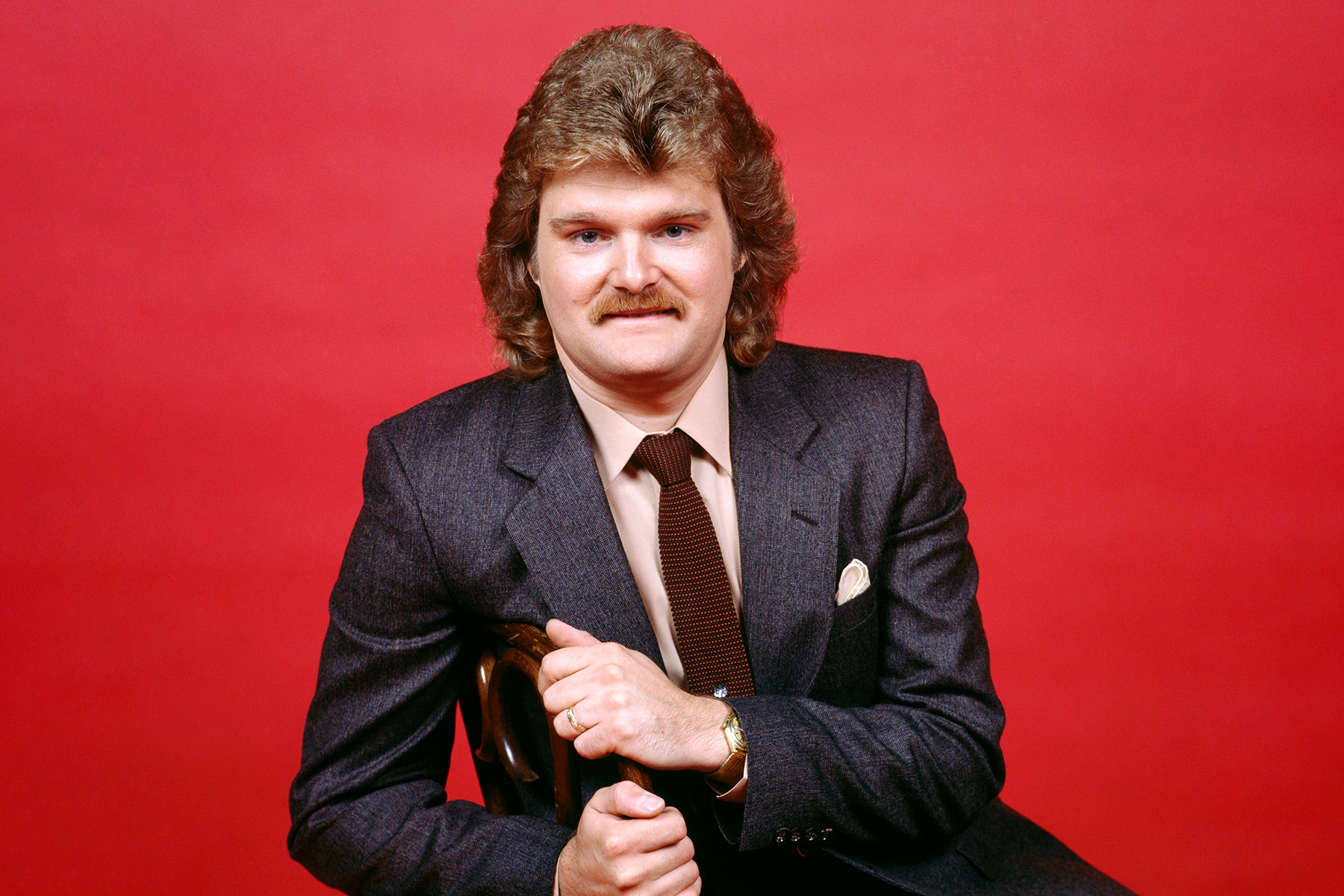 NASHVILLE – OCTOBER 11: Country music singer Ricky Skaggs poses for a portrait at the 16th Annual Country Music Association Awards in Nashville, Tenn., October 11, 1982. (Image Credit: CBS/Getty Images)
NASHVILLE – OCTOBER 11: Country music singer Ricky Skaggs poses for a portrait at the 16th Annual Country Music Association Awards in Nashville, Tenn., October 11, 1982. (Image Credit: CBS/Getty Images)
Songwriter Guy Clark envisioned his upbeat and catchy “Heartbroke” as something akin to a Chuck Berry tune. When Ricky Skaggs recorded it for his groundbreaking 1982 bluegrass-country album, Highways & Heartaches, the future Country Music Hall of Famer admitted he didn’t fully grasp the song’s meaning. Nevertheless, Skaggs instinctively knew how to deliver it with captivating energy. “Heartbroke” became the first of three singles from that album to reach the top of the country charts. It also gained popularity with other artists, including a then up-and-coming George Strait, who also recorded versions of the song. However, it was Kentucky native Skaggs who delivered the definitive and most vibrant rendition of “Heartbroke.” He made a slight lyrical change, sanitizing Clark’s line “pride is a bitch and a bore when you’re lonely,” but lost none of the song’s infectious joy and exuberance. “Heartbroke” became a signature hit for Skaggs, showcasing his ability to blend bluegrass instrumentation with country sensibilities and create music that was both traditional and broadly appealing.
Iris DeMent, ‘Let the Mystery Be’
 UNSPECIFIED – JANUARY 01: Iris DeMent, known for her unique voice and songwriting, is captured in a portrait taken on January 1, year unspecified. (Image Credit: Dave Peabody/Redferns)
UNSPECIFIED – JANUARY 01: Iris DeMent, known for her unique voice and songwriting, is captured in a portrait taken on January 1, year unspecified. (Image Credit: Dave Peabody/Redferns)
Born in Arkansas and raised in Los Angeles, Iris DeMent possesses a distinctive voice characterized by a vibrato-rich twang that is both smooth and assertive. Her songwriting has consistently been marked by heartfelt emotion and a grounded spirituality. “Let the Mystery Be,” which opens her exceptional 1993 debut album, Infamous Angel, serves as a perfect example of her artistry. The song thoughtfully explores ideas about heaven, purgatory, and the afterlife, ultimately arriving at a sensible and accepting conclusion: “No one knows for certain and so it’s all the same to me/I think I’ll just let the mystery be.” This song launched DeMent’s remarkably unconventional career, which has spanned gospel standards, protest songs, and even an entire LP inspired by the poetry of Russian poet Anna Akhmatova (The Trackless Woods). “Let the Mystery Be” has itself become a standard, with notable covers including a recent version by Wilco’s Jeff Tweedy on his Starship Casual Substack. It’s a song that encapsulates DeMent’s thoughtful and introspective approach to music, blending country roots with philosophical depth.
Luke Combs, ‘Beer Never Broke My Heart’
 CLARKSTON, MICHIGAN – MAY 30: Luke Combs performs live in concert in Clarkston, Michigan on May 30, showcasing his popular country hits. (Image Credit: Scott Legato/Getty Images)
CLARKSTON, MICHIGAN – MAY 30: Luke Combs performs live in concert in Clarkston, Michigan on May 30, showcasing his popular country hits. (Image Credit: Scott Legato/Getty Images)
Luke Combs has evolved into one of country music’s leading figures in the 2020s, celebrated for his heartfelt songs about family and relationships. However, he also proves his mastery of the classic country drinking song with “Beer Never Broke My Heart,” released in 2019. This track is a worthy addition to country’s extensive canon of beer-themed anthems, thanks to Combs’ clever and relatable lyrics and his signature husky vocal delivery. The way he emphasizes each phrase in the chorus with a deliberate pause — “Long neck! Ice cold! Beer never broke my heart!” — creates an irresistible singalong quality. Even in the bridge, with lines like “It takes one hand to count the things I can count on,” Combs injects genuine emotion into every lyric. “Beer Never Broke My Heart” demonstrates Combs’ ability to balance heartfelt ballads with fun, rowdy anthems, solidifying his broad appeal and position as a leading voice in contemporary country music.
Turnpike Troubadours, ‘The Bird Hunters’
 AUSTIN, TX – OCTOBER 05: Evan Felker of the Turnpike Troubadours performs at the Austin City Limits Music Festival in Austin, Texas. (Image Credit: Tim Mosenfelder/Getty Images)
AUSTIN, TX – OCTOBER 05: Evan Felker of the Turnpike Troubadours performs at the Austin City Limits Music Festival in Austin, Texas. (Image Credit: Tim Mosenfelder/Getty Images)
Turnpike Troubadours have been at the forefront of the Red Dirt country revival, a sound rooted in Oklahoma that dates back to the mid-20th century. “The Bird Hunters,” considered one of the finest songs to emerge from this tradition, is a quintessential Red Dirt narrative about returning home to East Oklahoma. The song beautifully marries traditional storytelling with classic country instrumentation, infused with a modern Southern rock sensibility. However, it’s Evan Felker’s deeply personal story that elevates “The Bird Hunters.” It tells the tale of a man grappling with life after a move to Tulsa doesn’t pan out, finding solace and rediscovering himself with the help of a friend and his dog. While this theme of homecoming and self-discovery is familiar, the Turnpike Troubadours deliver it with a level of detail and emotional depth that few bands can match. “The Bird Hunters” is a standout example of Red Dirt country at its finest, blending relatable storytelling with authentic musicality.
Johnny Lee, ‘Lookin’ for Love’
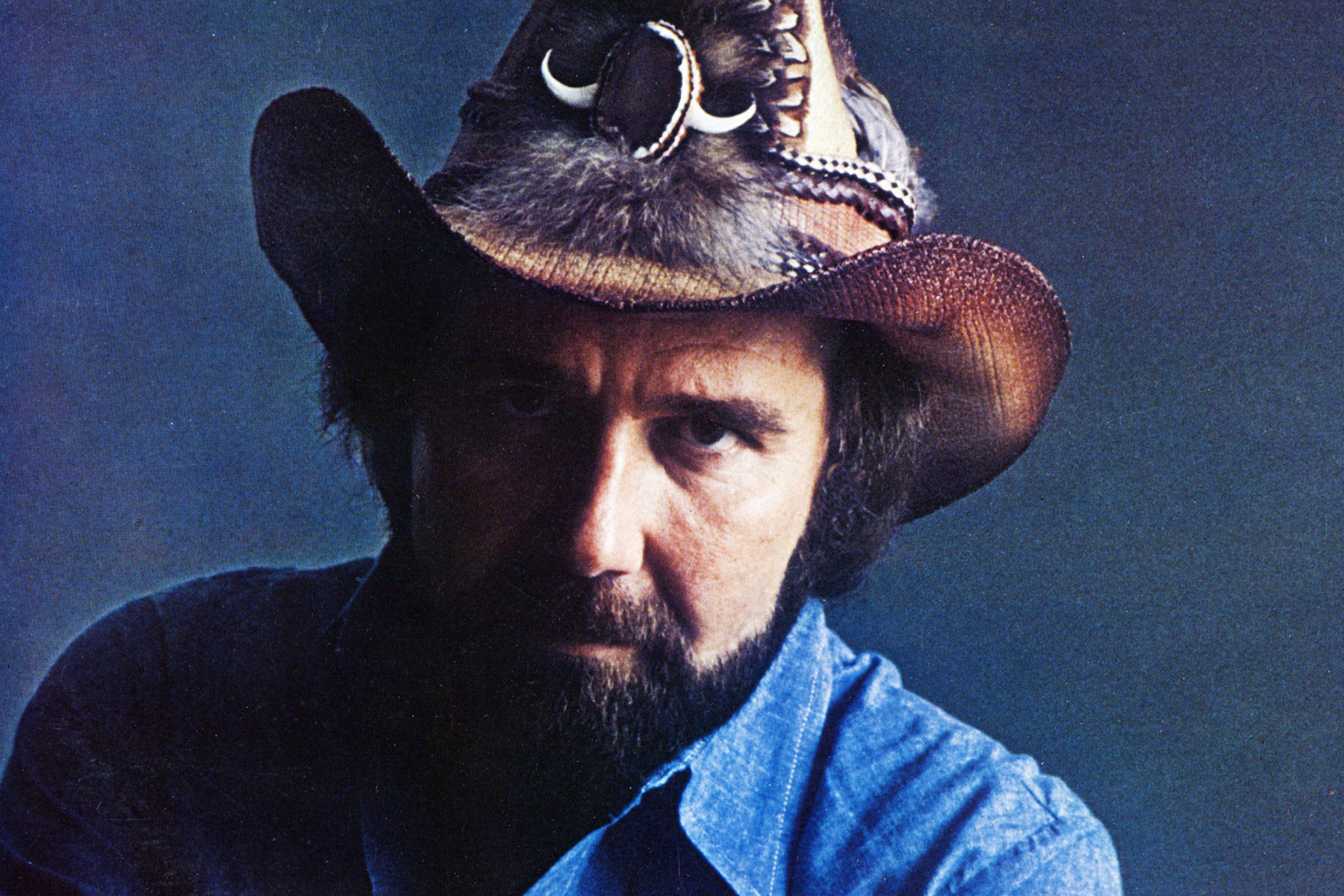 UNSPECIFIED – JANUARY 01: Johnny Lee, a prominent figure in country music, is captured in a publicity shot from circa 1970. (Image Credit: GAB Archive/Redferns)
UNSPECIFIED – JANUARY 01: Johnny Lee, a prominent figure in country music, is captured in a publicity shot from circa 1970. (Image Credit: GAB Archive/Redferns)
One evening in the late 1970s, Irving Azoff, then manager of the Eagles, approached Johnny Lee, who was leading the house band at Gilley’s, a popular Houston bar. Azoff inquired if Lee would be interested in singing in a movie he was involved in as music coordinator. Lee, accustomed to empty promises, later recounted to Texas Monthly, “Well, people were bullshitting me all the time. So I said, ‘Yeah, sure, just as soon as I finish this watermelon. You bet.’” This casual agreement proved incredibly fruitful. Urban Cowboy, starring John Travolta and Debra Winger, became a box office sensation, and its soundtrack was equally successful, spearheaded by Lee’s mellow, singles-bar anthem, “Lookin’ for Love.” Gilley and another music coordinator had discovered the song in a pile of demos. Lee himself admitted, “I couldn’t believe I hadn’t written it myself, it was the story of my life up till then.” “Lookin’ for Love” perfectly captured the zeitgeist of the Urban Cowboy era, becoming a defining song of the late 70s and early 80s country crossover movement.
Keith Urban, ‘You’ll Think of Me’
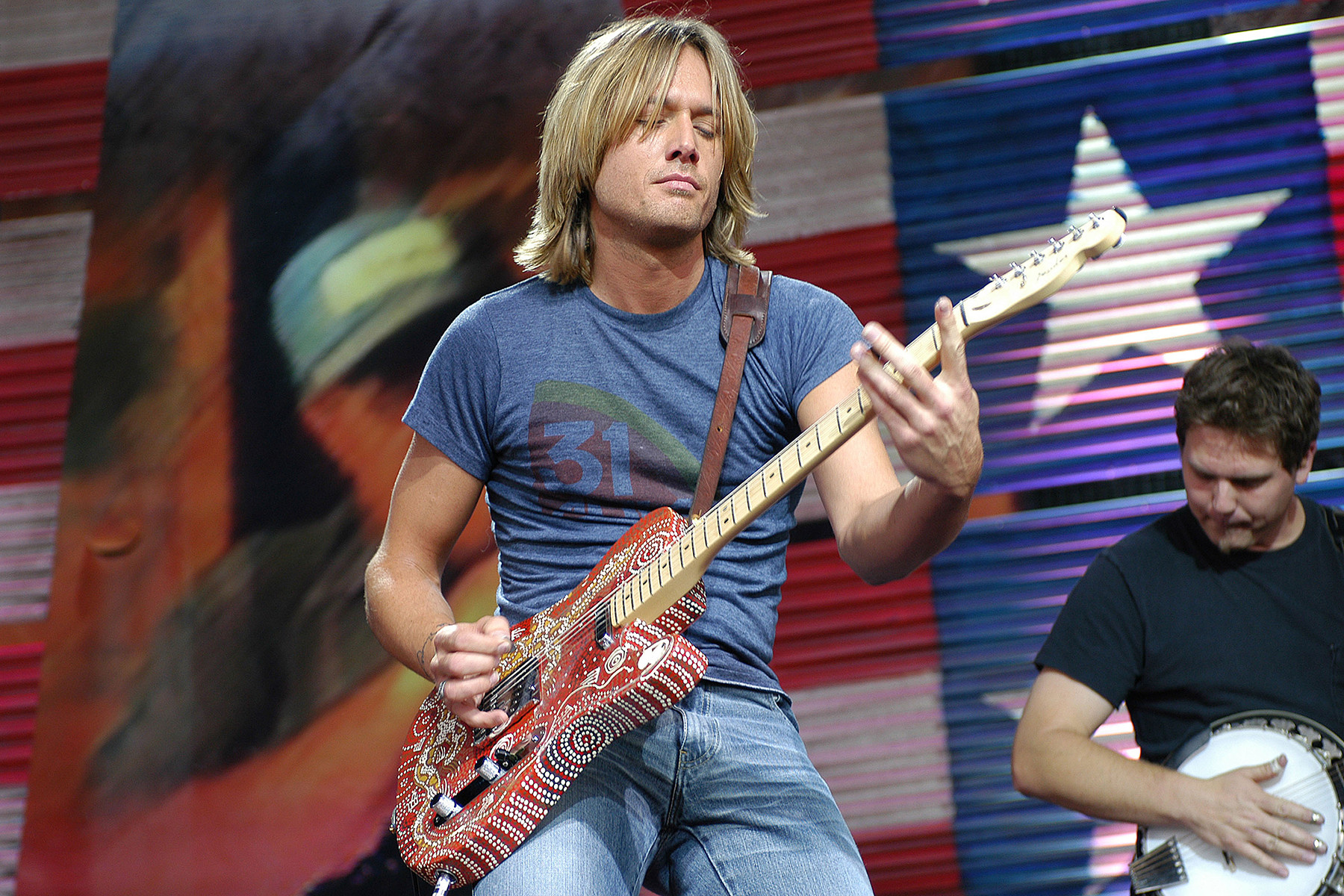 Keith Urban performs at Farm Aid in Pittsburgh, Pennsylvania, on September 21, 2002. (Image Credit: Paul Natkin/Getty Images)
Keith Urban performs at Farm Aid in Pittsburgh, Pennsylvania, on September 21, 2002. (Image Credit: Paul Natkin/Getty Images)
Keith Urban’s 2002 album, Golden Road, solidified his position as a major superstar with significant crossover potential. “You’ll Think of Me,” the last and arguably finest of the album’s four singles, showcases Urban’s versatility. While known for his guitar shredding, he opted for an acoustic approach on this exquisitely bitter breakup ballad. The lyrics express a desire to move on from a painful relationship: “Take your records, take your freedom/take your memories, I don’t need ‘em.” However, Urban’s mournful tone reveals the underlying pain and vulnerability beneath the tough exterior. Released as a single in 2004, “You’ll Think of Me” reached Number One on the country charts and also crossed over to adult contemporary and adult top 40 radio formats, ultimately earning Urban his first Grammy Award. It remains one of his most enduring and emotionally resonant hits, highlighting his ability to connect with audiences through both energetic anthems and introspective ballads.
Old Crow Medicine Show, ‘Wagon Wheel’
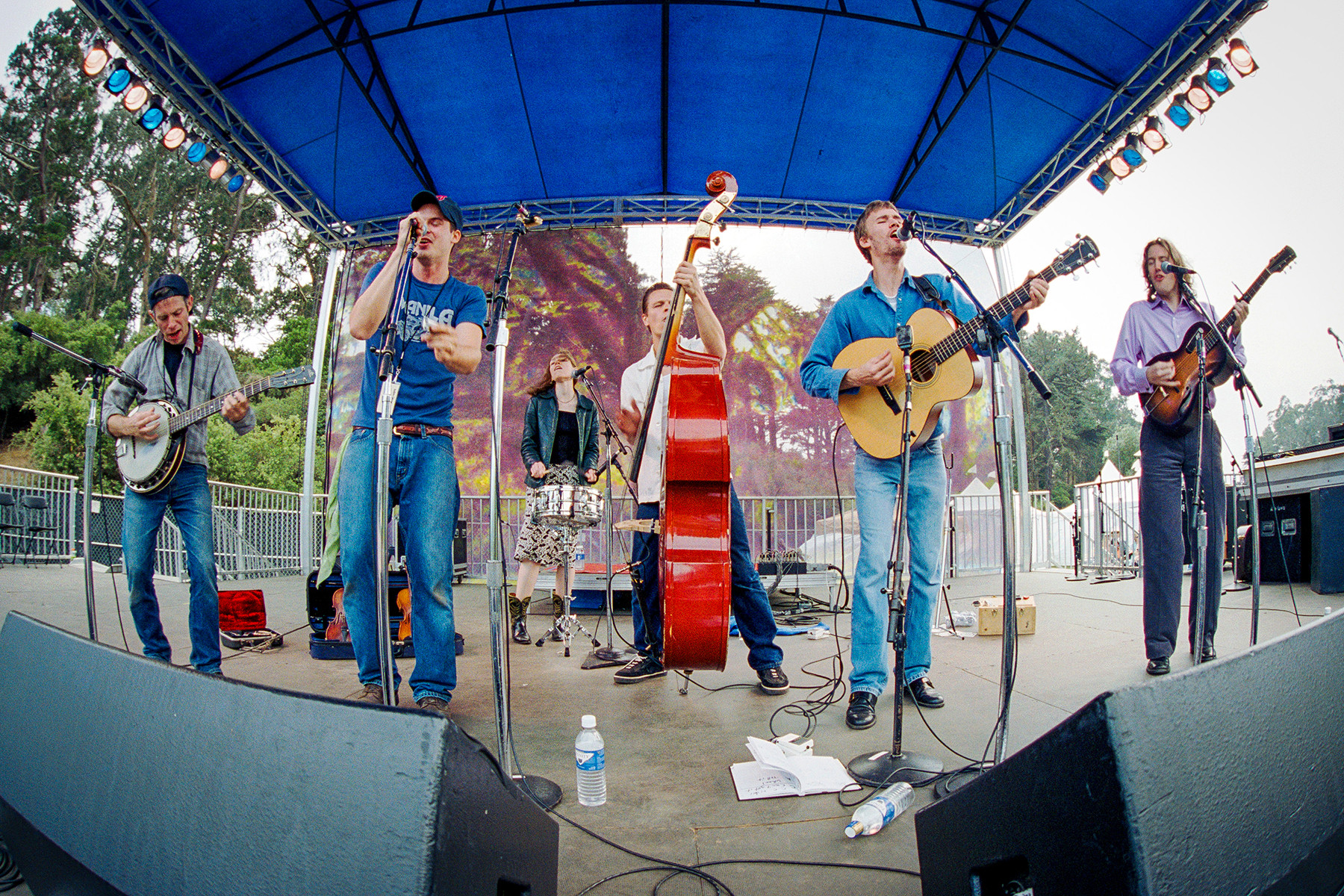 Old Crow Medicine Show performs with Gillian Welch and David Rawlings at Hardly Strictly Bluegrass Festival in San Francisco, California, October 5, 2003. (Image Credit: Anthony Pidgeon/Redferns)
Old Crow Medicine Show performs with Gillian Welch and David Rawlings at Hardly Strictly Bluegrass Festival in San Francisco, California, October 5, 2003. (Image Credit: Anthony Pidgeon/Redferns)
Old Crow Medicine Show’s “Wagon Wheel” has a unique and lengthy history, existing for over 30 years before the band recorded it and another decade before it became a major hit. The song originated as an unfinished Bob Dylan outtake from the 1973 Pat Garrett and Billy the Kid soundtrack sessions. Old Crow Medicine Show created their fiddle-driven version in 2004, adding their own lyrics to replace Dylan’s mumbled vocals. In 2013, Darius Rucker’s warm and accessible rendition of “Wagon Wheel” reached Number One on the Billboard Hot Country Songs chart, introducing the song to an even wider audience. Despite the song’s global popularity, Old Crow’s Critter Fuqua noted, “We’ve never met Dylan, but the song is technically co-written by Bob Dylan.” “Wagon Wheel” is a testament to the enduring power of folk melodies and storytelling, transcending genres and generations to become a beloved and universally recognized song.
DeFord Bailey, ‘Pan-American Blues’
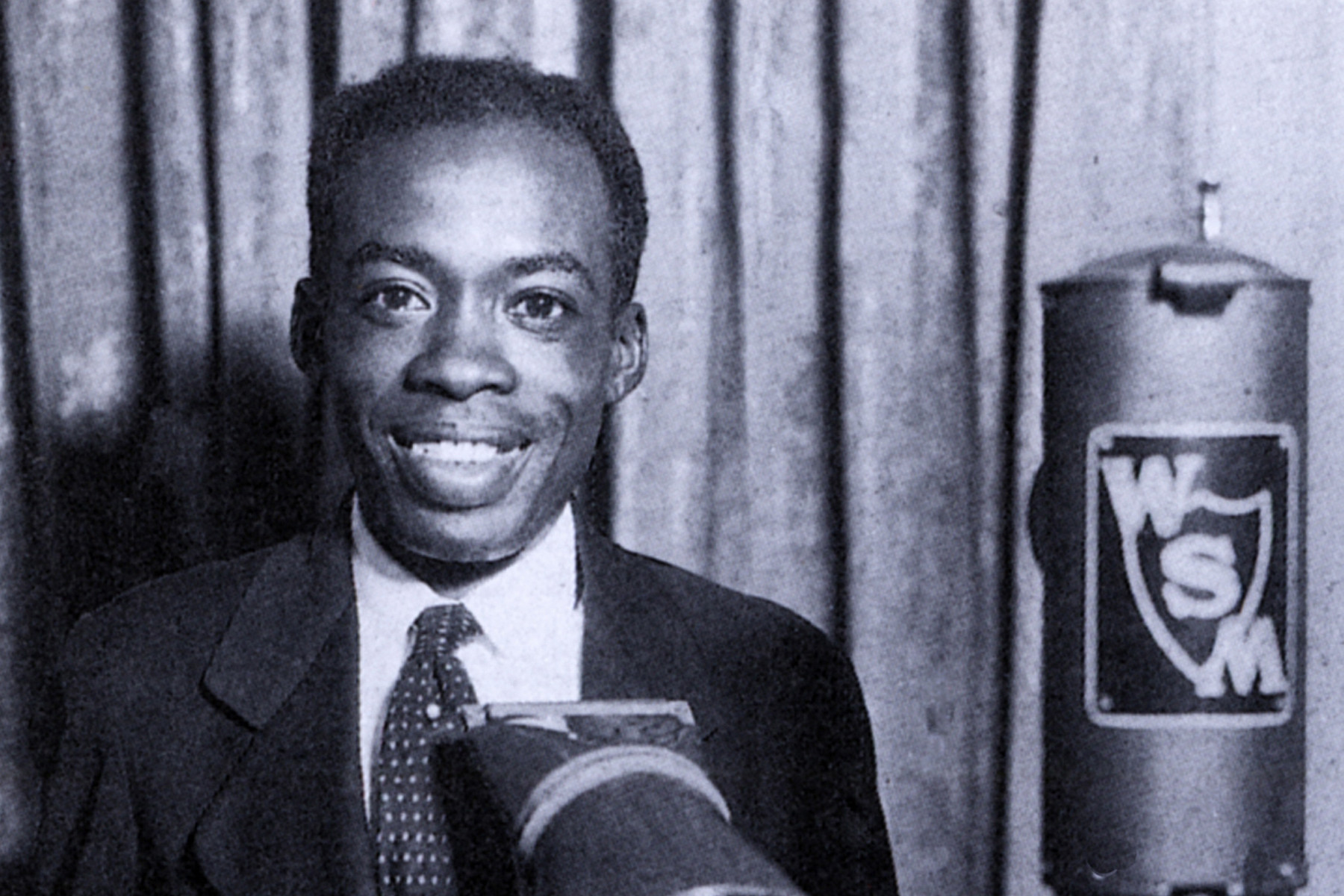 UNITED STATES – JANUARY 01: DeFord Bailey, a pioneer of country harmonica, is pictured in a portrait taken in the USA, date unspecified. (Image Credit: GAB Archive/Redferns)
UNITED STATES – JANUARY 01: DeFord Bailey, a pioneer of country harmonica, is pictured in a portrait taken in the USA, date unspecified. (Image Credit: GAB Archive/Redferns)
No artist appeared more frequently on country radio’s influential WSM Barn Dance than DeFord Bailey, known as the “harmonica wizard.” Bailey’s journey to musical prominence is remarkable. Confined to bed with polio as a child, he became deeply attuned to the sounds of his native Tennessee — the rhythmic chugging and whistling of trains, the baying of hound dogs, the calls of fox hunters, and the clucking of hens. He masterfully recreated these sounds on his harmonica. “Pan-American Blues,” named after the train route between New Orleans and Cincinnati, is a three-minute piece of sonic cinema, evocative of early motion pictures. Bailey was not only one of country music’s first Black stars but also one of the earliest and biggest stars of a burgeoning radio program that would later become The Grand Ole Opry. His contributions were pivotal in shaping the sound and early popularity of country music, highlighting the genre’s diverse roots and pioneering figures.
Dierks Bentley, ‘I Hold On’
 LAS VEGAS, NV – APRIL 08: Dierks Bentley performs onstage at the Tim McGraw concert in Las Vegas, showcasing his country hits. (Image Credit: Ethan Miller/Getty Images)
LAS VEGAS, NV – APRIL 08: Dierks Bentley performs onstage at the Tim McGraw concert in Las Vegas, showcasing his country hits. (Image Credit: Ethan Miller/Getty Images)
In the mid-1990s, Dierks Bentley and his father embarked on a cross-country drive from Arizona to Nashville in an aging Chevrolet pickup. In 2012, after Bentley had achieved country stardom, his father passed away. While this personal context isn’t essential to appreciate Bentley’s 2013 single “I Hold On,” understanding it adds profound depth to the song. The opening verse about why he continues to drive that old pickup truck becomes particularly resonant. “I Hold On” appeared on Bentley’s seventh album, Riser, a significant release considered one of his best. While Bentley’s ascent to stadium-filling status might not have been as rapid as some of his contemporaries, songs like “I Hold On” demonstrate his staying power and artistic depth. It’s a song that speaks to themes of resilience, memory, and the enduring connection to one’s past, solidifying Bentley’s position as a consistent and meaningful voice in country music.
Sons of the Pioneers, ‘Tumbling Tumbleweeds’
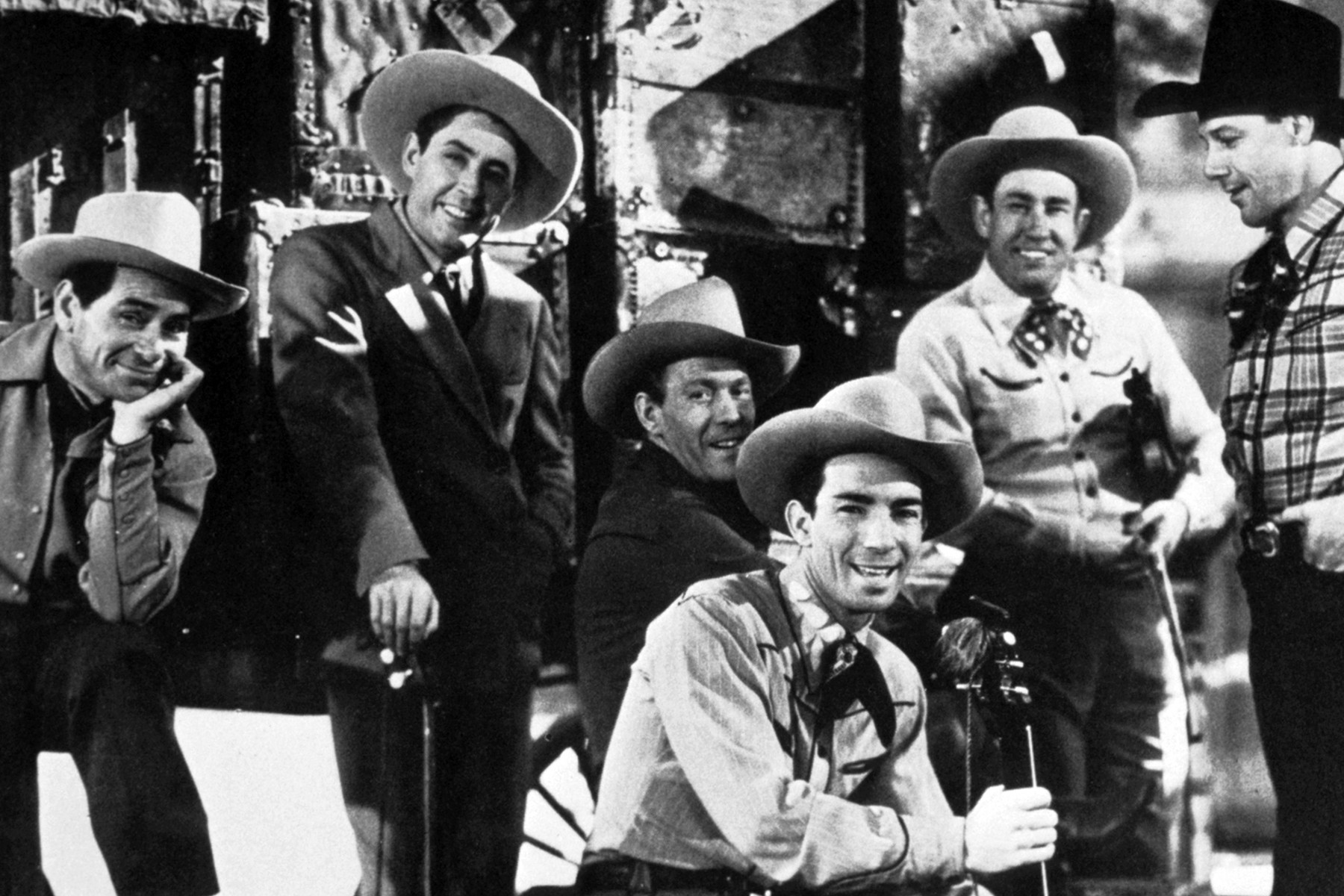 UNITED STATES – JANUARY 01: Sons of the Pioneers, a pioneering group in western music, are pictured in a portrait from the USA, date unspecified. (Image Credit: GAB Archive/Redferns)
UNITED STATES – JANUARY 01: Sons of the Pioneers, a pioneering group in western music, are pictured in a portrait from the USA, date unspecified. (Image Credit: GAB Archive/Redferns)
Early recordings by Sons of the Pioneers, the vocal group led by Roy Rogers before he became Hollywood’s “King of the Cowboys” alongside Dale Evans, possessed an ethereal quality. This was largely due to the captivating vocal interplay between Rogers, Bob Nolan, and Tim Spencer. “Tumbling Tumbleweeds,” recorded during the Sons’ very first recording session, evokes vast, open landscapes with its sweeping harmonies and prominent violin. However, the song’s romanticized lyrics are somewhat ironic given its historical context: this seemingly cheerful song about the joys of vagrancy became a hit during the depths of the Great Depression. Despite the hardship of the era, “Tumbling Tumbleweeds” offered an escapist fantasy, romanticizing the life of a wanderer. The lyrics are also subtly humorous, with the tumbleweeds of the title “pledging their love to the ground” as they roll across the plains. It’s a song that captures the spirit of the American West, blending musical beauty with a touch of whimsy and historical irony.
Mary Gauthier, ‘Mercy Now’
 Mary Gauthier attends the 2005 Sundance Film Festival – ASCAP Music Cafe in Park City, Utah. (Image Credit: Fred Hayes/WireImage)
Mary Gauthier attends the 2005 Sundance Film Festival – ASCAP Music Cafe in Park City, Utah. (Image Credit: Fred Hayes/WireImage)
Mary Gauthier, known for her Southern gothic songwriting and panoramic narratives, created her signature song with “Mercy Now.” It’s a deeply moving plea for compassion that expands from the personal to the universal and back again. An existential cry, the song requests “mercy now” for her dying father, for a struggling nation, for a fragile planet, and ultimately, for ourselves. Gauthier began writing “Mercy Now” after visiting her father, who was hospitalized with Alzheimer’s-like symptoms following a car accident. Inspired by the repeating lines in Lucinda Williams’ 1988 song “Changed the Locks” and the shifting landscape of post-9/11 America, she intentionally broadened her perspective. Years later, Rolling Stone would recognize “Mercy Now” as one of the 40 Saddest Country Songs of All Time. However, Gauthier herself offers a different interpretation, stating, “I’m honored, but ‘Mercy Now’ is not sad, it’s real.” Indeed, the song transcends simple sadness, offering a profound and resonant meditation on empathy and the human condition.
Vern Gosdin, ‘Chiseled in Stone’
 Vern Gosdin, a traditionalist country singer, performs in Chicago, Illinois, on October 3, 1998. (Image Credit: Paul Natkin/Getty Images)
Vern Gosdin, a traditionalist country singer, performs in Chicago, Illinois, on October 3, 1998. (Image Credit: Paul Natkin/Getty Images)
Tammy Wynette once praised Vern Gosdin as “the only other singer who can hold a candle to George Jones,” a testament to his vocal prowess and emotional depth. Gosdin, a staunch country traditionalist, solidified this reputation with his most affecting hit single, “Chiseled in Stone,” which earned the CMA Song of the Year award in 1989. Co-written by Gosdin and Max D. Barnes, “Chiseled in Stone” is a quintessential barroom ballad, beginning with casual conversation that evolves into deep reflection and ultimately, profound heartache. Gosdin’s exceptional talent lay in his ability to convey each of these emotional stages with equal gravity and authenticity. He navigates the song without ever becoming overly sentimental, even as it becomes clear he is in conversation with someone whose life experiences of loss and pain dwarf his own. “Chiseled in Stone” is a masterclass in traditional country storytelling and emotional delivery, showcasing Gosdin’s place among the genre’s finest vocalists.
Tyler Childers, ‘Long Violent History’
 LONDON, ENGLAND – JANUARY 21: Tyler Childers performs at O2 Shepherd's Bush Empire in London, England, captivating the audience with his music. (Image Credit: Robin Little/Redferns/Getty Images)
LONDON, ENGLAND – JANUARY 21: Tyler Childers performs at O2 Shepherd's Bush Empire in London, England, captivating the audience with his music. (Image Credit: Robin Little/Redferns/Getty Images)
The 2020 police killing of George Floyd reverberated across America, extending even into the often conservative world of country music. Few artists across any genre addressed the issue of racism in America as powerfully and directly as Tyler Childers did with “Long Violent History,” the title track of his third studio album. This album is primarily instrumental, featuring public domain fiddle tunes that build towards a potent message. The album’s closer, and the only track with lyrics, “Long Violent History,” is where Childers confronts the issue head-on. Acknowledging his perspective as “a white boy from Hickman,” he challenges listeners to consider how they would feel if they were “just constantly worryin’/Kickin’ and fightin’, beggin’ to breathe.” Childers released the song with an accompanying video message, expressing his desire for “justice for Breonna Taylor, a Kentuckian,” like himself, among other heartfelt statements. “Long Violent History” stands as a brave and necessary commentary on racial injustice within the country music landscape, demonstrating Childers’ willingness to use his platform for meaningful social dialogue.
Pam Tillis, ‘Maybe It Was Memphis’
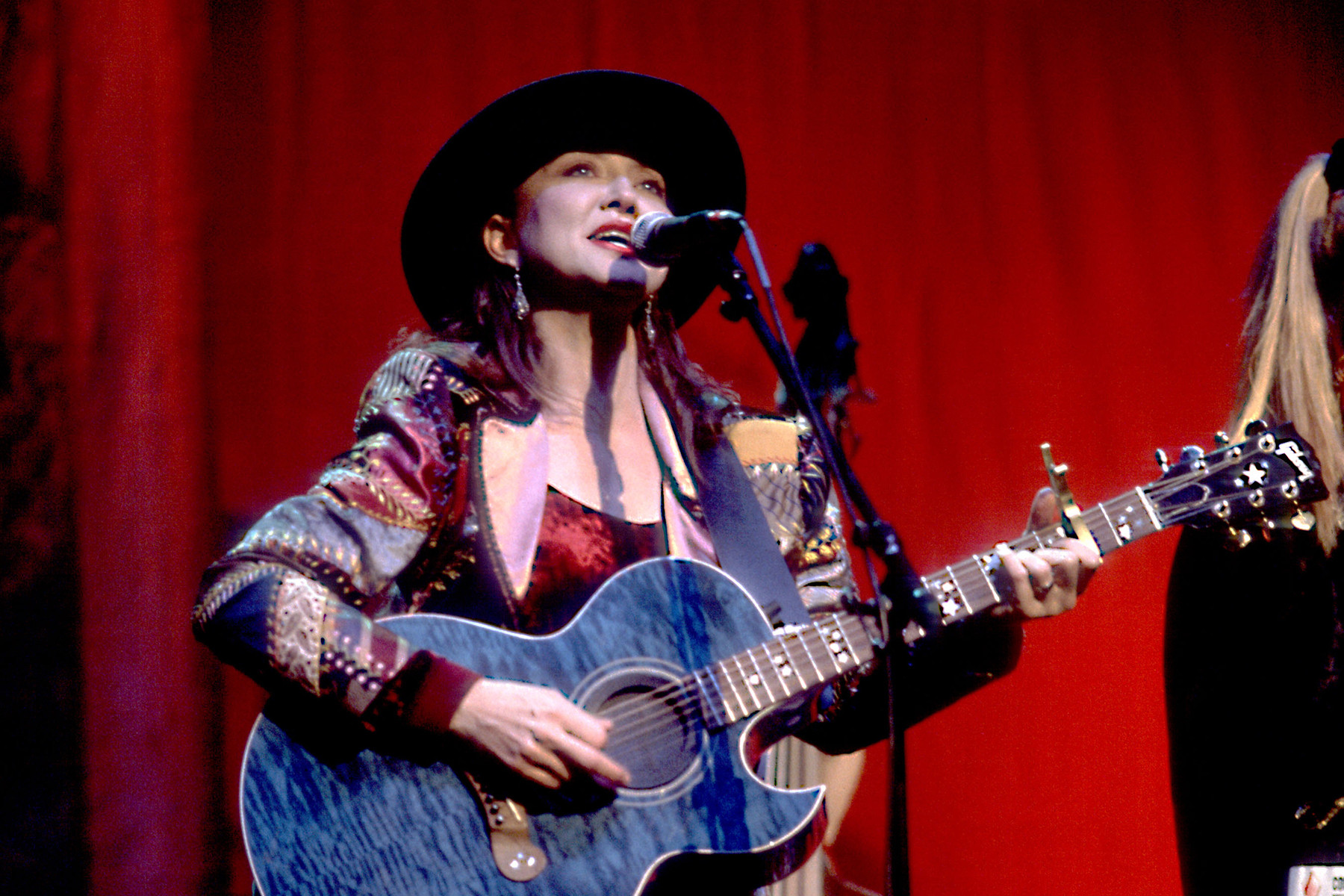 Pam Tillis, a leading female country artist, is photographed on December 1, 1993, in Nashville, Tennessee. (Image Credit: Paul Natkin/WireImage)
Pam Tillis, a leading female country artist, is photographed on December 1, 1993, in Nashville, Tennessee. (Image Credit: Paul Natkin/WireImage)
Pam Tillis emerged as one of the brightest stars of the 1990s country music boom, distinguished by her unique blend of twang, sass, and soulfulness. Music is in her DNA; her father, Mel Tillis, was a Nashville legend renowned for hits like “Midnight, the Blues, and Me.” Pam even sang backup on his 1980 hit “Your Body Is an Outlaw.” After a brief foray into New Wave pop in the 1980s, she transitioned back to her country roots and achieved major stardom with her 1991 signature song, “Maybe It Was Memphis.” This steamy ballad recounts a summer romance with a captivating young man reminiscent of a character from a Faulkner novel. Tillis followed up “Maybe It Was Memphis” with a string of iconic hits, including “Put Yourself in My Place,” “Spilled Perfume,” “Mi Vida Loca (My Crazy Life),” and the uniquely titled honky-tonk lament, “Cleopatra, Queen of Denial.” Her contributions cemented her place as a leading female voice in 90s country and showcased her versatility and captivating stage presence.
Kathy Mattea, ‘Eighteen Wheels and a Dozen Roses’
 Musician Kathy Mattea performs on stage in Indianapolis, Indiana, on April 7, 1990, delivering her folk-pop country sound. (Image Credit: Paul Natkin/Getty Images)
Musician Kathy Mattea performs on stage in Indianapolis, Indiana, on April 7, 1990, delivering her folk-pop country sound. (Image Credit: Paul Natkin/Getty Images)
Historically, country music has been identified as music for adults, often dealing with mature themes and life experiences. Kathy Mattea, a singer with a warm and inviting voice, played a significant role in maintaining a folk-pop-country sound on the radio during the decade between Anne Murray and Mary Chapin Carpenter. She achieved the biggest hit of her career with “Eighteen Wheels and a Dozen Roses.” The song tells the story of Charlie, a trucker on the verge of retirement, heading home to his wife with plans to exchange his big rig for an RV and embrace leisure time. Mattea sings with empathy and without condescension, “With pieces of the old dream, they’re gonna light the old flame, doin’ what they please.” “Eighteen Wheels and a Dozen Roses” celebrates the idea that life and love can flourish even as one chapter closes and another begins, resonating with listeners who appreciate stories of enduring relationships and the joys of later life.
Billy Strings, ‘Dust in a Baggie’
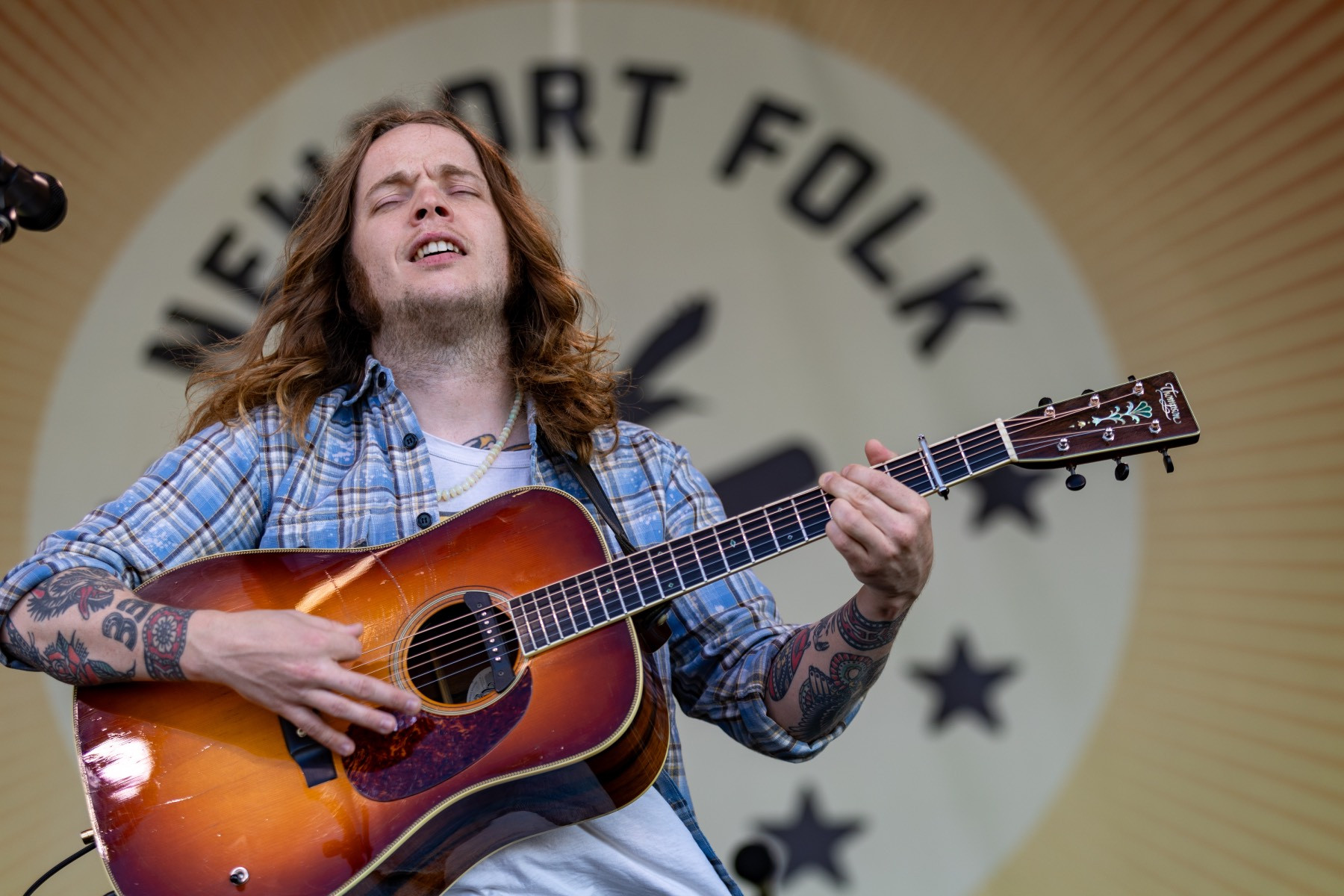 Billy Strings, a contemporary bluegrass artist, is captured in a live performance setting. (Image Credit: Douglas Mason/Getty)
Billy Strings, a contemporary bluegrass artist, is captured in a live performance setting. (Image Credit: Douglas Mason/Getty)
While many artists are labeled as “outlaw country” with questionable claims to the label, bluegrass virtuoso Billy Strings delivers genuine, raw authenticity with “Dust in a Baggie.” This song is a stark and unflinching narrative of methamphetamine addiction, loosely based on the experiences of a family friend. Alongside Strings’ furious and intricate guitar picking, the song is anchored by an incredibly catchy and memorable chorus couplet: “I used my only phone call to contact my Daddy/I got 20 long years for some dust in a baggie.” Fortunately, Billy Strings himself avoided incarceration, finding sobriety instead. “Dust in a Baggie” is a powerful example of his ability to blend bluegrass instrumentation with unflinching lyrical honesty, tackling difficult subject matter with both musical skill and emotional depth. It stands as a testament to his artistry and willingness to explore the darker corners of human experience within his music.
Darius Rucker, ‘Don’t Think I Don’t Think About It’
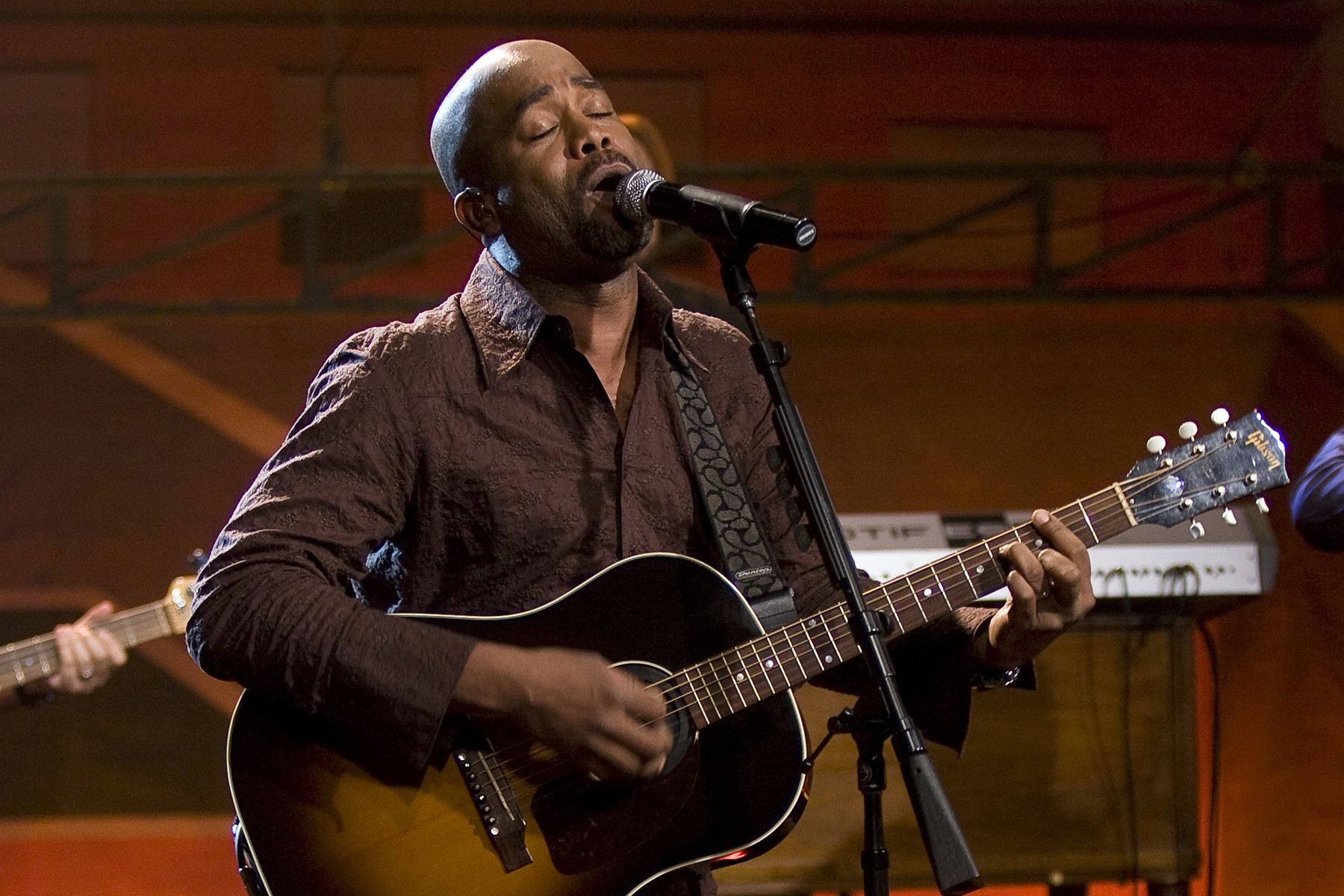 THE TONIGHT SHOW WITH JAY LENO — Darius Rucker performs as a musical guest on The Tonight Show, October 27, 2008. (Image Credit: Paul Drinkwater/NBCU Photo Bank/NBCUniversal/Getty Images)
THE TONIGHT SHOW WITH JAY LENO — Darius Rucker performs as a musical guest on The Tonight Show, October 27, 2008. (Image Credit: Paul Drinkwater/NBCU Photo Bank/NBCUniversal/Getty Images)
Despite the widespread influence of Hootie & the Blowfish and their melodic folk-rock sound, Darius Rucker’s success as a country artist was not guaranteed. However, his 2008 solo debut proved to be an undeniable triumph. “Don’t Think I Don’t Think About It” is a mature and relatable country anthem that explores the universal experience of revisiting “what if” scenarios years after a past relationship ends. The song resonated deeply with audiences, reaching Number One on the country chart and making Rucker, who co-wrote the song, the first Black artist to achieve a Number One country hit since Ray Charles’ duet with Willie Nelson on “Seven Spanish Angels” in 1985. “Don’t Think I Don’t Think About It” successfully bridged Rucker’s established fanbase with the country music world, launching a successful second act in his musical career and demonstrating his ability to connect with listeners across genres.
Jimmie Davis, ‘You Are My Sunshine’
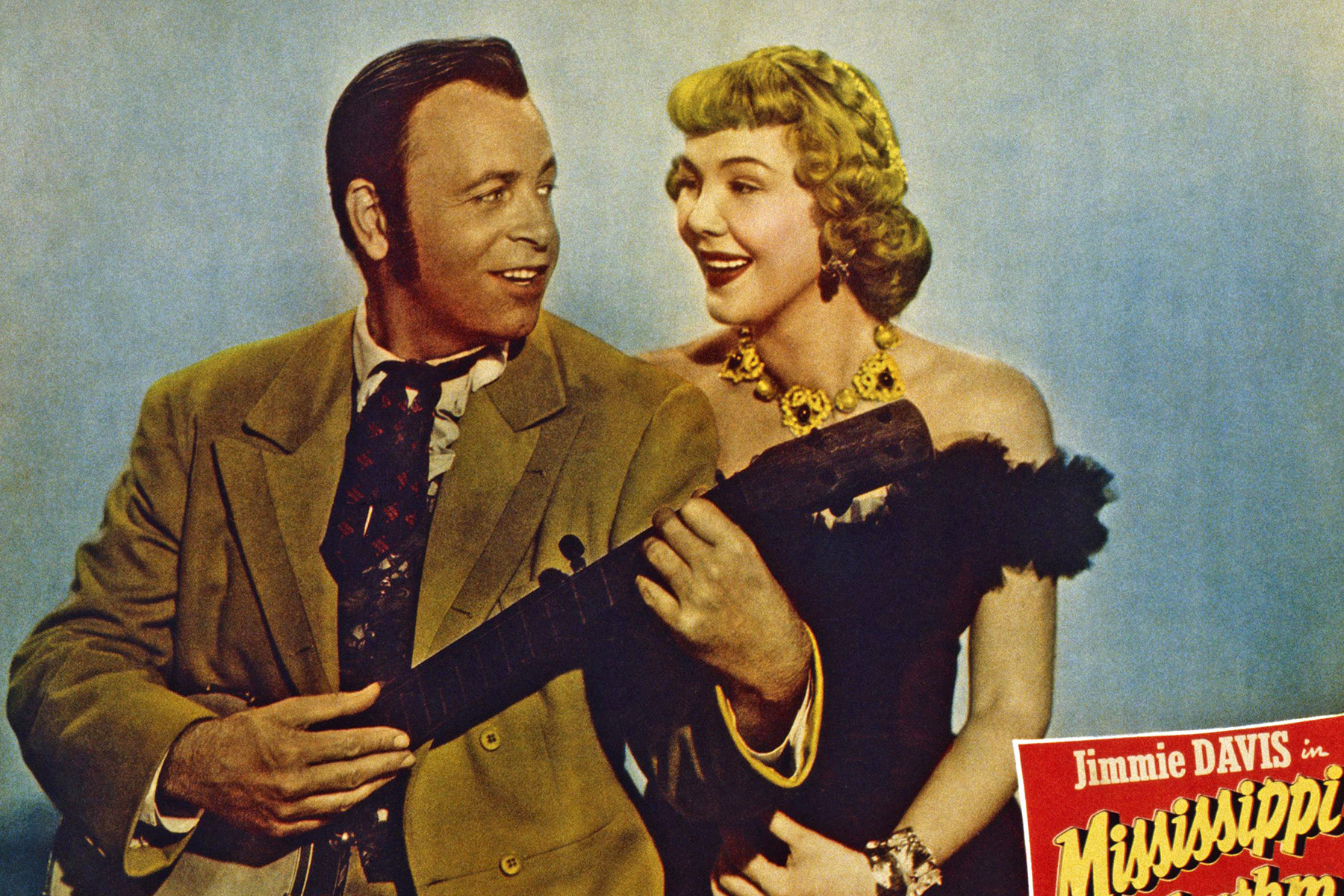 Mississippi Rhythm, US lobbycard, featuring Jimmie Davis and Veda Ann Borg, 1949. (Image Credit: LMPC/Getty Images)
Mississippi Rhythm, US lobbycard, featuring Jimmie Davis and Veda Ann Borg, 1949. (Image Credit: LMPC/Getty Images)
George Jones once declared “You Are My Sunshine” the most perfect song ever written. Alongside “Happy Birthday to You” and “White Christmas,” it is considered one of the most universally recognized songs in the world. While countless versions exist, the original 1940 recording by Jimmie Davis remains the most beloved. The authorship of “You Are My Sunshine” is debated and somewhat unclear, mirroring the ambiguity of its lyrics, which are far from the sunny optimism its title might suggest. Davis’ own life story is equally complex. He led one of the earliest racially integrated bands in country music history, yet later ran for and served two terms as governor of Louisiana on a segregationist platform. Despite these contradictions, the enduring popularity of “You Are My Sunshine” has remained colorblind, with hit versions recorded by artists ranging from Bing Crosby to Aretha Franklin. It’s a song that transcends genre and cultural boundaries, continuing to touch hearts across generations.
Jo Dee Messina, ‘Heads Carolina, Tails California’
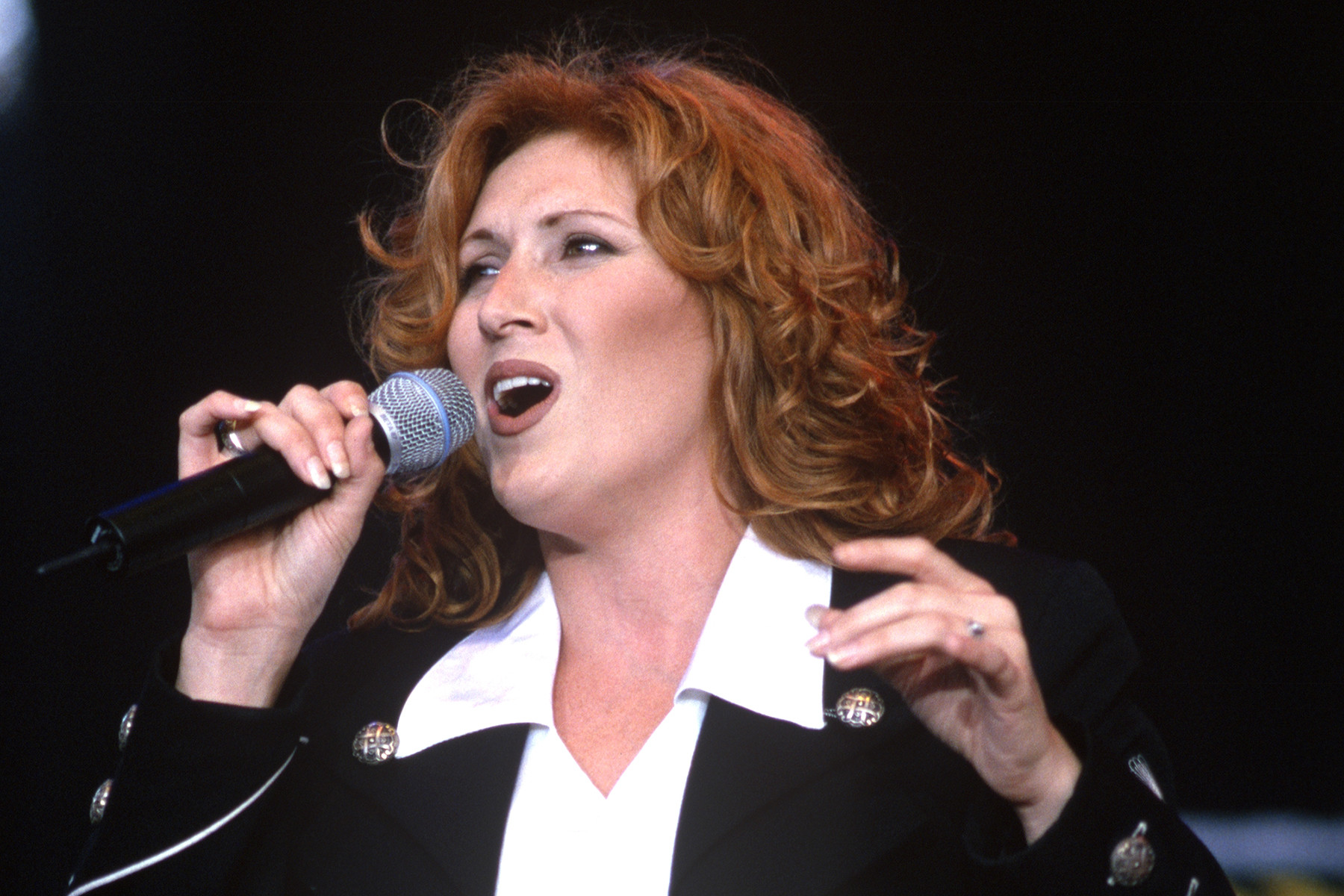 Jo Dee Messina performs at Shoreline Amphitheatre in Mountain View, California, on October 4, 1997. (Image Credit: Tim Mosenfelder/Getty Images)
Jo Dee Messina performs at Shoreline Amphitheatre in Mountain View, California, on October 4, 1997. (Image Credit: Tim Mosenfelder/Getty Images)
“Can we change ‘Austin’ to ‘Boston’?” Jo Dee Messina asked songwriters Tim Nichols and Mark Sanders before recording “Heads Carolina, Tails California,” a last-minute addition to her debut album. Messina, originally from Framingham, Massachusetts, explained, “‘Cause I really do have people in Boston!” Prior to her breakthrough, Messina spent her early years in Nashville working as a bartender and competing in talent contests. “Heads Carolina, Tails California” catapulted her to stardom. The song’s lyrics, referencing geographically diverse locations, marked a subtle but significant shift in country music’s geographical focus. Earlier in the 20th century, California and the Carolinas were hubs of country music production. For Messina, and for many listeners who discovered country music during its 1990s boom, these locations represented aspirational destinations, promised lands of sunshine and twang. “Heads Carolina, Tails California” captured this shift and resonated with a new generation of country fans, solidifying Messina’s place in the genre.
Linda Ronstadt, ‘Long Long Time’
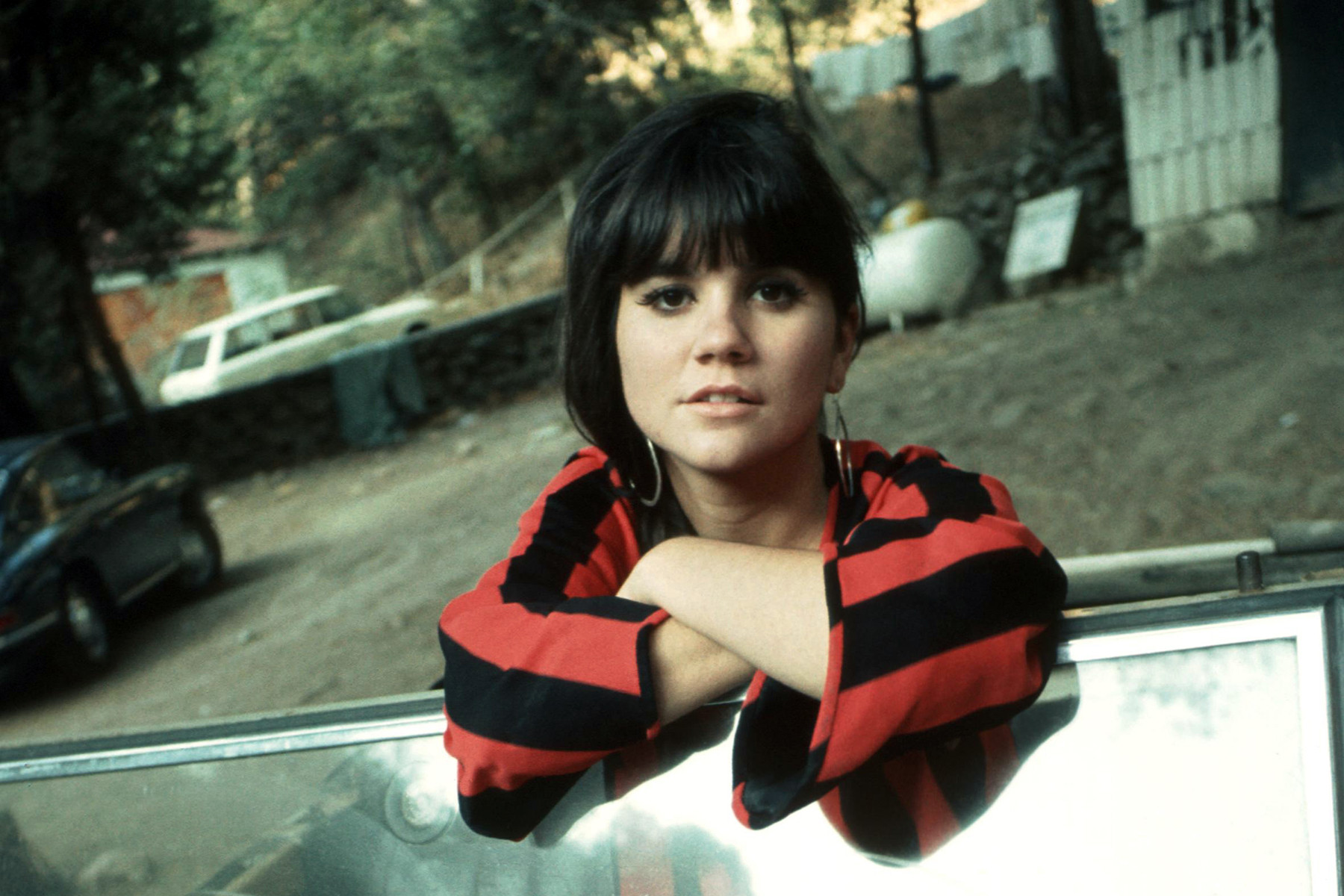 Linda Ronstadt, a versatile vocalist, is pictured in a circa 1970 publicity portrait. (Image Credit: Michael Ochs Archives/Getty Images)
Linda Ronstadt, a versatile vocalist, is pictured in a circa 1970 publicity portrait. (Image Credit: Michael Ochs Archives/Getty Images)
“I hate that album,” Linda Ronstadt confessed to Rolling Stone regarding her 1970 country LP Silk Purse. “I couldn’t sing then; I didn’t know what I was doing.” However, she made an exception for one track: “Long Long Time.” Written by Gary White, this heart-wrenching ballad of unrequited love showcases Ronstadt’s incredible vocal range and emotional depth. Listeners had previously been enchanted by Ronstadt’s cover of Michael Nesmith’s “Different Drum” with the Stone Poneys, but “Long Long Time” served as the definitive introduction to her powerhouse vocals as a solo artist. It became her first solo single to chart and earned Ronstadt her first Grammy nomination. Remarkably, over five decades after its release, “Long Long Time” experienced a resurgence in popularity in 2023, thanks to its prominent use in HBO’s The Last of Us, introducing the song to a new generation of listeners and reaffirming its timeless emotional impact.
Sugarland, ‘Baby Girl’
 Sugarland performs at the 2005 CMT Music Awards Pre-Party in Nashville, Tennessee. (Image Credit: Rick Diamond/WireImage)
Sugarland performs at the 2005 CMT Music Awards Pre-Party in Nashville, Tennessee. (Image Credit: Rick Diamond/WireImage)
Country music often celebrates the narrative of the underdog who ultimately triumphs. In the case of Sugarland’s 2004 debut hit, “Baby Girl,” the song itself is a story about striving for success in country music. With its bright, clean melody and crisp three-part harmonies, the chorus of “Baby Girl” resembles a letter (or perhaps an email) requesting financial support from folks back home. However, Jennifer Nettles, Kristian Bush, Kristen Hall, and co-writer Troy Bieser also cleverly wove in subtle critiques of the often-cutthroat music industry within the verses. “Big town full of little white lies/Everybody’s your friend, you can never be sure,” Nettles sings, offering a glimpse into the realities of pursuing a music career. “Baby Girl” served as a compelling introduction to the multi-talented Jennifer Nettles and foreshadowed a path in country music that would resonate with subsequent artists like Carrie Underwood, Kelsea Ballerini, and Taylor Swift, all of whom navigated the industry with a blend of talent and savvy.
Luke Bryan, ‘Drink a Beer’
 LAS VEGAS, NV – APRIL 07: Luke Bryan performs at the 48th Annual Academy of Country Music Awards in Las Vegas, Nevada. (Image Credit: Ethan Miller/Getty Images)
LAS VEGAS, NV – APRIL 07: Luke Bryan performs at the 48th Annual Academy of Country Music Awards in Las Vegas, Nevada. (Image Credit: Ethan Miller/Getty Images)
Initially, “Drink a Beer” might have seemed like another typical tailgate anthem from Luke Bryan, often associated with lighthearted party songs. However, this ballad profoundly surprises listeners with its poignant tale of honoring someone lost too soon. Bryan delivers the song with raw emotional authenticity, drawing from his own tragic experiences – the early deaths of both his brother and sister. His lingering grief permeates the song, written by Chris Stapleton and Jim Beavers. Bryan’s performance of “Drink a Beer” at the 2013 CMA Awards, with a then-lesser-known Chris Stapleton providing backing vocals, was charged with palpable emotion. However, it is the studio version of “Drink a Beer” that stands as Bryan’s artistic peak, a moment of rare and genuine sorrow from an artist often known for his upbeat and jovial persona. It demonstrates his range as an artist and his capacity to connect with audiences on a deeply emotional level.
Brenda Lee, ‘I’m Sorry’
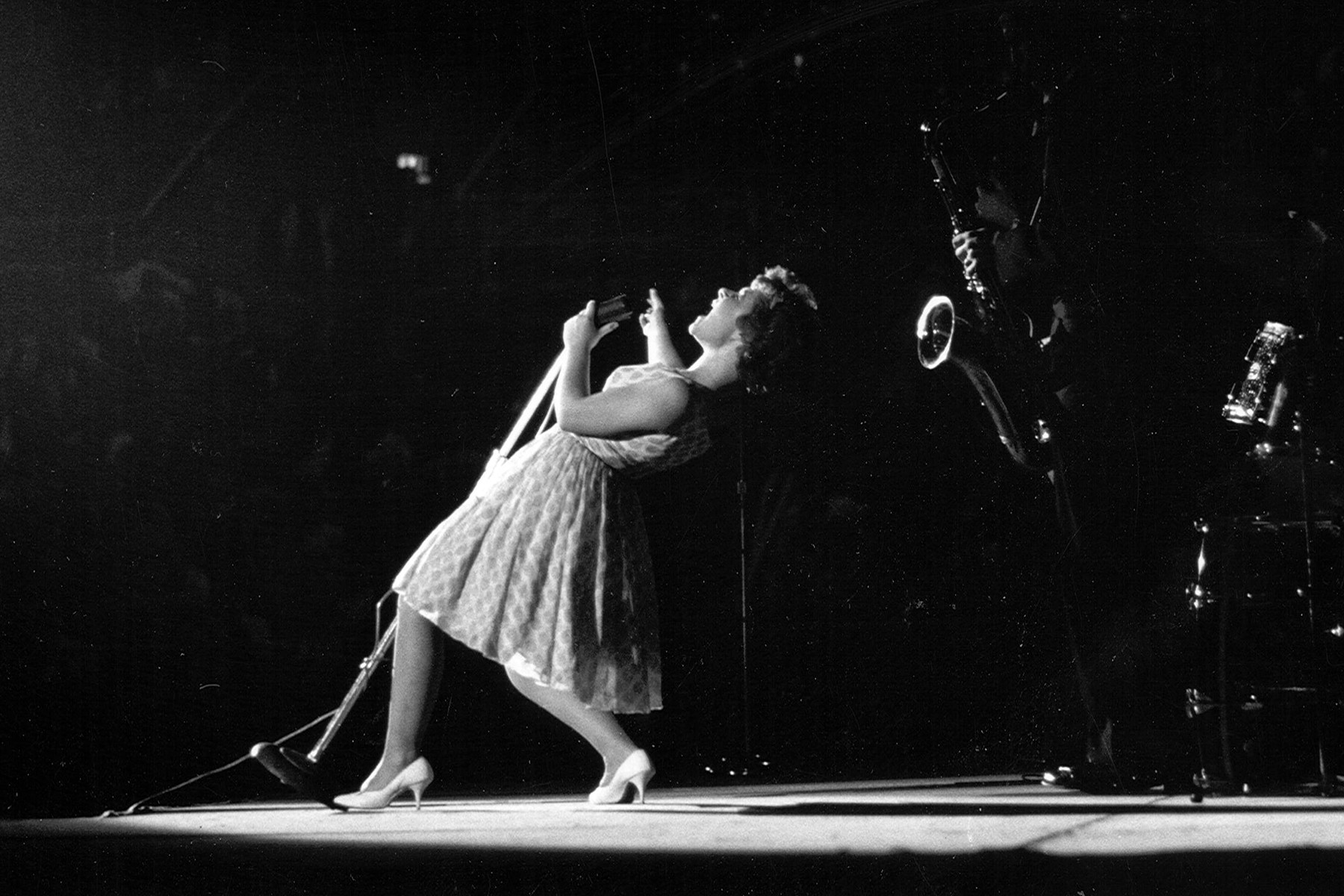 NOVEMBER 1960: Brenda Lee, a music icon, performs in concert in November 1960, showcasing her powerful vocals. (Image Credit: Michael Ochs Archives/Getty Images)
NOVEMBER 1960: Brenda Lee, a music icon, performs in concert in November 1960, showcasing her powerful vocals. (Image Credit: Michael Ochs Archives/Getty Images)
Brenda Lee holds the distinction of being the first woman inducted into both the country and rock and roll halls of fame. She was remarkably only 15 years old when she recorded “I’m Sorry” with producer Owen Bradley, the Anita Kerr Singers, and the studio musicians known as the A-Team. “I’m Sorry” became a pop Number One hit, though surprisingly it never topped the country charts, highlighting the often-arbitrary nature of genre classifications. Today, it stands as both a quintessential example of the Nashville Sound and a reminder that genre boundaries are often fluid and constructed. The record itself is somewhat enigmatic. How did Lee, at such a young age, convey such profound emotional depth and regret? She repeatedly apologizes, earnestly pleading for forgiveness. The listener is left to wonder: what exactly did she do? And will she ever truly forgive herself? “I’m Sorry” remains a timeless ballad, showcasing Lee’s extraordinary vocal talent and emotional maturity beyond her years.
Margo Price, ‘Hurtin’ (on the Bottle)’
 AUSTIN, TX – MARCH 16: Margo Price performs onstage at NPR Music during the 2016 SXSW Music Festival in Austin, Texas. (Image Credit: Waytao Shing/Getty Images for SXSW)
AUSTIN, TX – MARCH 16: Margo Price performs onstage at NPR Music during the 2016 SXSW Music Festival in Austin, Texas. (Image Credit: Waytao Shing/Getty Images for SXSW)
What’s the recipe for a great country song? For Margo Price, it might involve spending time with friends on a porch, sharing a bottle of Bulleit Rye. Margo Price co-wrote “Hurtin’ (on the Bottle)” one evening with her husband, Jeremy Ivey, along with Caitlin Rose and Mark Fredson. It was released on her acclaimed 2016 debut album, Midwest Farmer’s Daughter. “Hurtin’ (on the Bottle)” remains her most popular song, likely due to its universally relatable themes of whiskey and heartbreak, delivered with an infectious swing. Although Price has since become sober, she still embraces performing “Hurtin’ (on the Bottle).” As she told Rolling Stone in a recent interview, reflecting on a conversation with her husband, “Jeremy was like, ‘You don’t even drink anymore. Do you want to play any drinking song? Do you even think that that connects with you?’ I was like, ‘It fucking resonates with me now more than ever.’” The song’s enduring appeal lies in its honest portrayal of coping mechanisms and emotional pain, even as Price’s own relationship with alcohol has evolved.
Brandy Clark, ‘Pray to Jesus’
 NASHVILLE, TN – NOVEMBER 05: Brandy Clark performs during the 2013 CMA Songwriters Series in Nashville, Tennessee. (Image Credit: Terry Wyatt/Getty Images)
NASHVILLE, TN – NOVEMBER 05: Brandy Clark performs during the 2013 CMA Songwriters Series in Nashville, Tennessee. (Image Credit: Terry Wyatt/Getty Images)
Brandy Clark had already established herself as an A-list Nashville songwriter, penning hits like Miranda Lambert’s “Mama’s Broken Heart,” when “Pray to Jesus” introduced her as a significant solo singer-songwriter. “Pray to Jesus,” the opening track from her solo debut, 12 Stories, is delivered in the first person from the perspective of people who “pray to Jesus” and “play the lotto” because “there ain’t but two ways/We can change tomorrow.” Initially, it might seem like a somewhat condescending character study, but as the details accumulate, the song reveals a knowing empathy and understanding of the lives it portrays. Clark’s deftness with wordplay – blending humor, wisdom, poignancy, and pain – has propelled her and frequent co-writer Shane McAnally to Broadway, through their work on the musical Shucked. “Pray to Jesus” showcases Clark’s storytelling prowess and her ability to create complex and relatable characters within the framework of a country song.
Tony Joe White, ‘Polk Salad Annie’
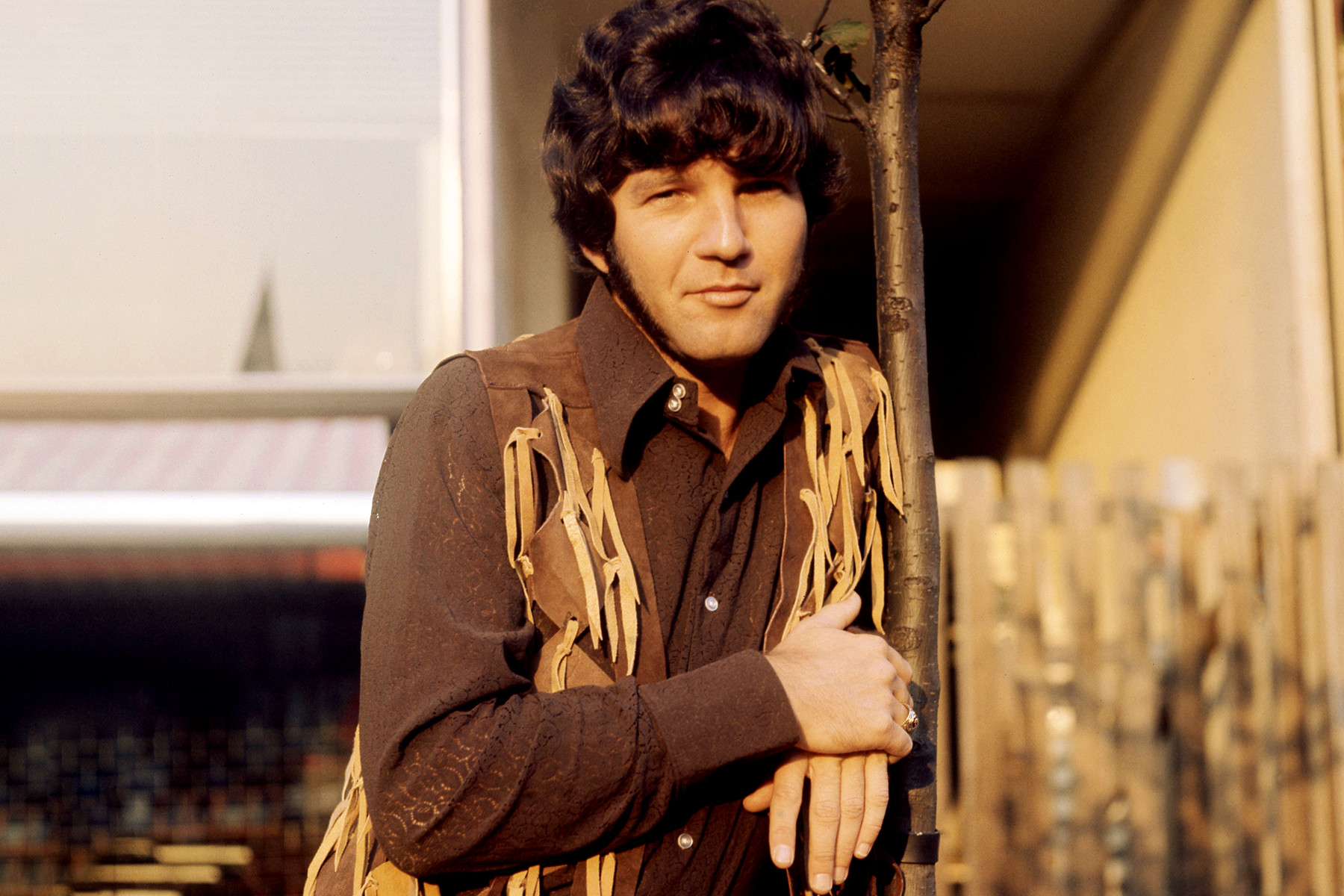 American singer-songwriter Tony Joe White poses for a portrait in London, England, on August 25, 1970. (Image Credit: TPLP/Getty Images)
American singer-songwriter Tony Joe White poses for a portrait in London, England, on August 25, 1970. (Image Credit: TPLP/Getty Images)
Louisiana native Tony Joe White begins “Polk Salad Annie” by defining “polk salad” for those “who may have never been down South too much.” He then spends much of the song recounting tales of the title character’s hardworking mother, no-good father, and grandmother who met an untimely end via alligator (“chomp, chomp”). However, at its core, “Polk Salad Annie” is undeniably a love song. White’s raw, almost primal grunts, suggestive guitar licks, and swampy groove all underscore his infatuation with the wild child Annie. Recorded with the original Muscle Shoals rhythm section, who had by then relocated to Nashville for session work, “Polk Salad Annie” is considered an early example of a rootsy subgenre that became known as country funk. Decades later, it remains perhaps the country funkiest song ever recorded, showcasing White’s unique blend of blues, country, and funk influences.
Wanda Jackson, ‘Hot Dog! That Made Him Mad’
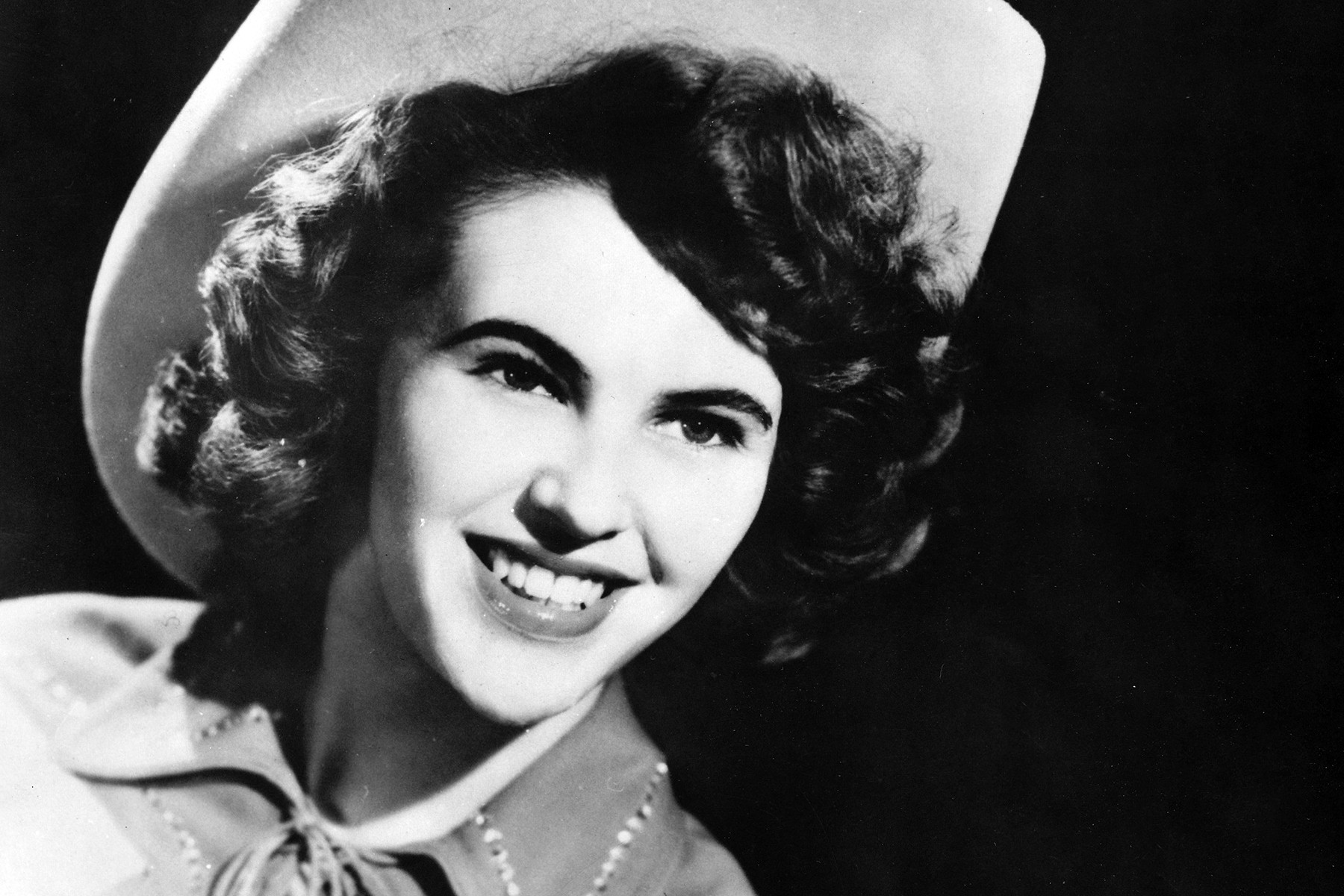 Wanda Jackson, the Queen of Rockabilly, poses for a studio portrait in 1958 in the United States. (Image Credit: Gilles Petard/Redferns)
Wanda Jackson, the Queen of Rockabilly, poses for a studio portrait in 1958 in the United States. (Image Credit: Gilles Petard/Redferns)
Wanda Jackson’s vocal style was defined by a feral growl, exuding an aggressive sexuality and a rebellious spirit. The Oklahoma firecracker earned her title as the Queen of Rockabilly in the 1950s. Discovered by her idol Hank Thompson and having toured with Elvis Presley, Jackson unleashed a string of libidinally charged tunes such as “Fujiiyama Mama,” “Funnel of Love,” and “Tongue Tied.” However, her ultimate classic is arguably the 1956 single “Hot Dog! That Made Him Mad.” This feminist guitar anthem celebrates the erotic thrill of playfully tormenting men. Jackson’s music defined the rebellious spirit of female rockabilly pioneers like Janis Martin and the Collins Kids. In later years, Jackson turned to gospel music (“Jesus Put a Yodel in My Soul”), but she partnered with fan Jack White for her superb and unapologetically rocking 2011 comeback album, The Party Ain’t Over. Wanda Jackson remains a vital figure in rock and country music, embodying female empowerment and raw musical energy.
Hank Snow, ‘I’m Moving On’
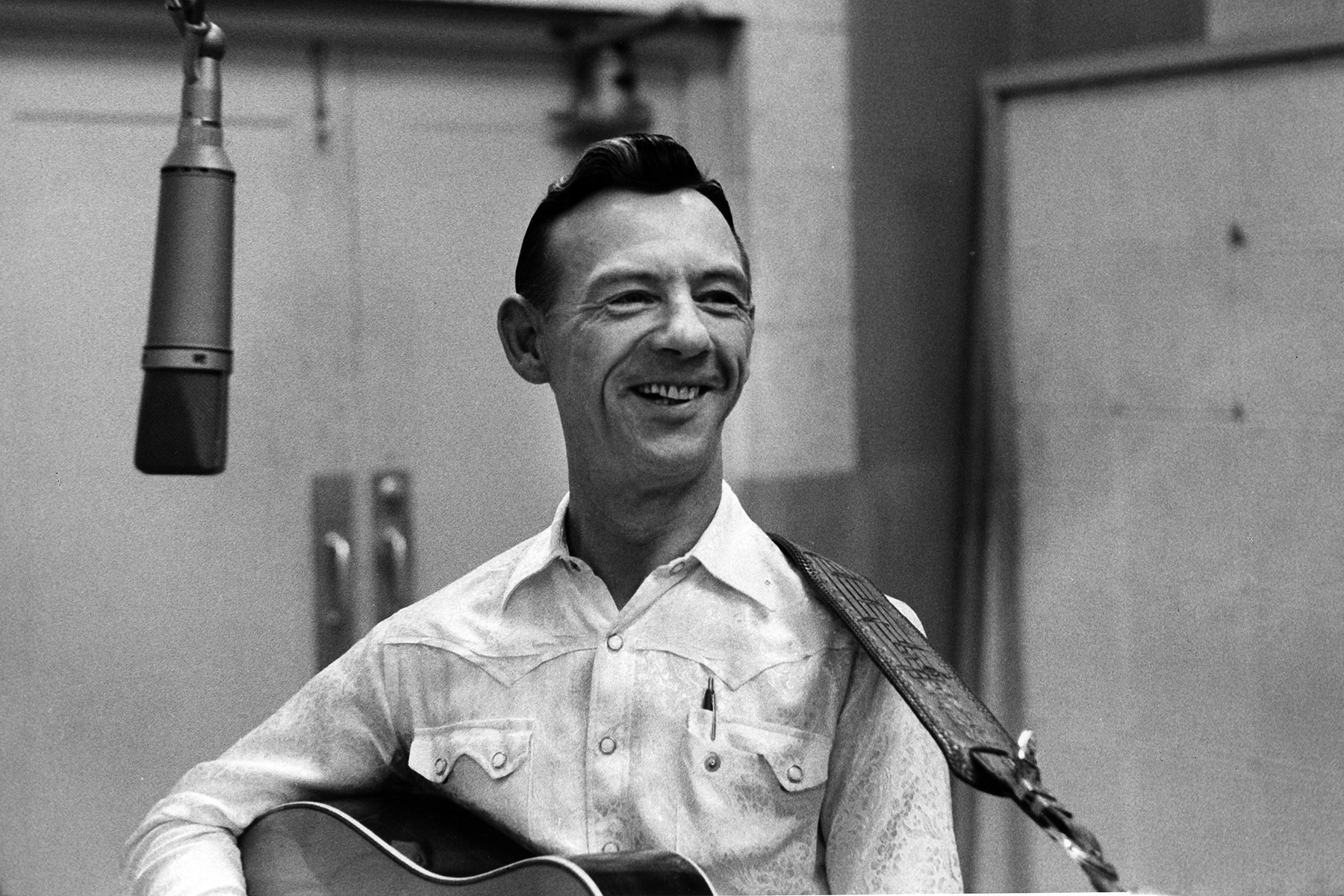 UNSPECIFIED – CIRCA 1970: Hank Snow, known for his distinctive voice, is pictured in a publicity portrait from circa 1970. (Image Credit: Michael Ochs Archives/Getty Images)
UNSPECIFIED – CIRCA 1970: Hank Snow, known for his distinctive voice, is pictured in a publicity portrait from circa 1970. (Image Credit: Michael Ochs Archives/Getty Images)
Hank Snow delivers “I’m Moving On” with his characteristically nasal and meticulously enunciated twang. In the lyrics, he declares his intention to catch a train back south as quickly as possible, escaping a “pretty mama” who wronged this “true-loving daddy.” However, the song’s remarkable 21-week reign at the top of the country chart likely owes as much to his band’s driving rhythm as to the lyrical content. The song features a train-track-like sway, a lonesome-whistle steel guitar, and Snow’s own energetic flat-picked lead guitar work. “I’m Movin’ On” represented state-of-the-art country & western music in the mid-20th century. Even today, Snow’s recording sounds like it’s still picking up speed, a testament to its enduring energy and classic country sound.
The Band Perry, ‘If I Die Young’
 MANHATTAN, KS – JUNE 26: The Band Perry, siblings Kimberly Perry, Reid Perry, and Neil Perry, demonstrate songwriting backstage at the 2010 Country Stampede music festival. (Image Credit: Rick Diamond/Getty Images)
MANHATTAN, KS – JUNE 26: The Band Perry, siblings Kimberly Perry, Reid Perry, and Neil Perry, demonstrate songwriting backstage at the 2010 Country Stampede music festival. (Image Credit: Rick Diamond/Getty Images)
The Band Perry’s 2010 breakout hit from their self-titled debut album, “If I Die Young,” transcends the typical “live fast, die young” trope, delving into a poignant exploration of life cut short. Written by lead singer Kimberly Perry, “If I Die Young” remains unparalleled in its heart-wrenching depiction of premature death, centered around the stark and unforgettable image of “the sharp knife of a short life.” Certified seven-times platinum, the song became the sibling trio’s biggest hit and has taken on a significant pop culture life. It was prominently featured on American Idol (famously performed by Lauren Alaina in Season 10) and Glee, where it was covered by Naya Rivera in tribute to castmate Cory Monteith, who passed away at age 31 in 2013. Tragically, Naya Rivera herself also died young at age 33 in 2020, leading to a resurgence in the song’s popularity and further cementing its emotional resonance with themes of loss and remembrance.
Dave Dudley, ‘Six Days on the Road’
 UNSPECIFIED – CIRCA 1970: Dave Dudley, a pioneer of trucking songs, is pictured in a publicity portrait from circa 1970. (Image Credit: Michael Ochs Archives/Getty Images)
UNSPECIFIED – CIRCA 1970: Dave Dudley, a pioneer of trucking songs, is pictured in a publicity portrait from circa 1970. (Image Credit: Michael Ochs Archives/Getty Images)
Before country music had “White Line Fever,” “Convoy,” or “East Bound and Down,” there was “Six Days on the Road.” This song forever linked country’s hardworking, blue-collar image to the world of semi-truck driving. While not the first trucking song, “Six Days on the Road” was an early hit that masterfully captured the loneliness, monotony, demands, and everyday details of life on the road for truckers. “I think it was one of those songs that truck drivers in those days were waiting for,” Dave Dudley told the authors of The All-American Truck Stop Cookbook. “They were kind of like outlaws back then. After that song came out, I got letters from those guys saying thank you for taking the load off our back. It kind of helped change their image to knights of the road.” “Six Days on the Road” became an anthem for truckers and a defining song in the subgenre of trucking country, celebrating the spirit and challenges of this essential profession.
David Allan Coe, ‘You Never Even Called Me by My Name’
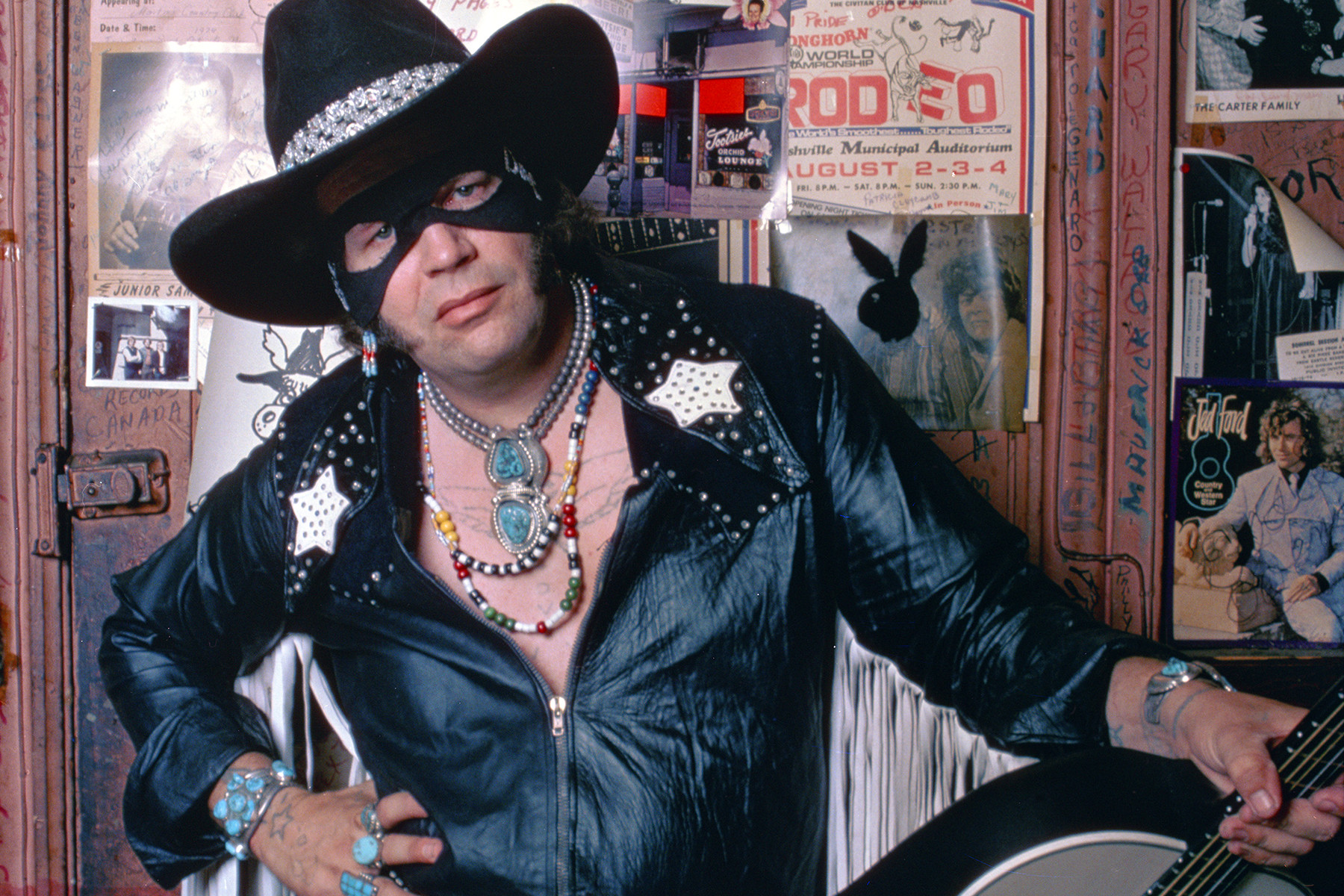 Musician David Allan Coe, dressed as The Mysterious Rhinestone Cowboy, is photographed for New York magazine in August 1975. (Image Credit: Al Clayton/Getty Images)
Musician David Allan Coe, dressed as The Mysterious Rhinestone Cowboy, is photographed for New York magazine in August 1975. (Image Credit: Al Clayton/Getty Images)
Of all places to write “the perfect country & western song,” as the lyrics themselves proclaim, Paul Anka’s personal suite at the Waldorf Astoria might seem the most improbable. Yet, this is where Steve Goodman and John Prine first collaborated on this parodic yet affectionate tribute to country music clichés. “I was feeling pretty good,” John Prine recalled, referring to a successful raid of Anka’s liquor cabinet, “so I jumped up on the bed and acted like I had an imaginary fiddle and said, ‘But you don’t have to call me darlin’, darlin’.” Many artists might have shied away from the song’s inherent cheekiness. However, David Allan Coe embraced it, even adding a bridge in which Goodman himself appears as a character, intentionally incorporating even more country music clichés into the lyrics. “You Never Even Called Me by My Name” became a signature song for Coe, celebrated for its humor, self-awareness, and affectionate send-up of country music tropes, all while being a genuinely great country song in its own right.
The Mavericks, ‘All You Ever Do Is Bring Me Down’
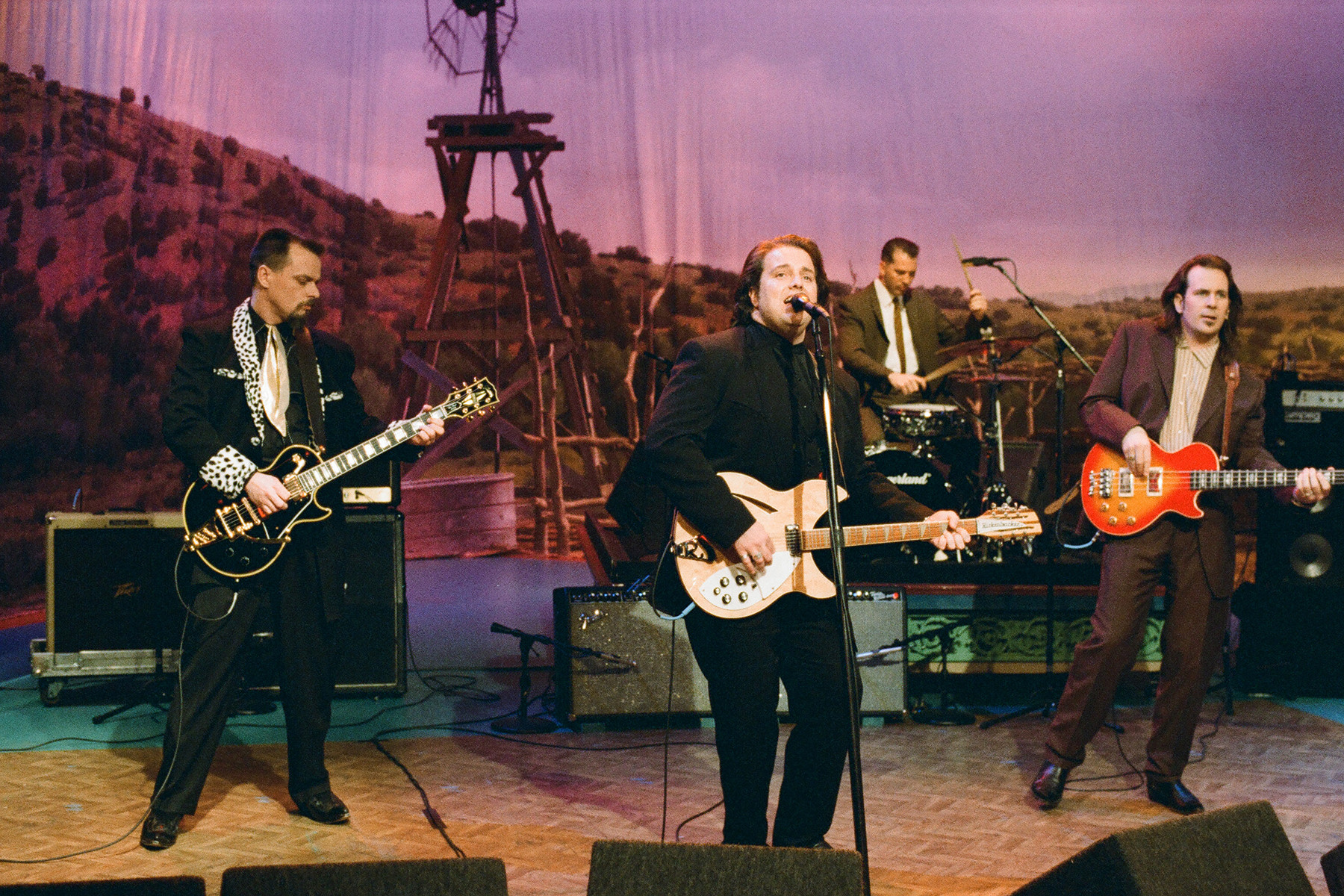 The Mavericks perform on The Tonight Show with Jay Leno in 1995, showcasing their unique country sound. (Image Credit: Margaret Norton/NBCU Photo Bank/NBCUniversal via Getty Images via Getty Images)
The Mavericks perform on The Tonight Show with Jay Leno in 1995, showcasing their unique country sound. (Image Credit: Margaret Norton/NBCU Photo Bank/NBCUniversal via Getty Images via Getty Images)
Billboard aptly described the Mavericks’ position within the mid-1990s Nashville scene as “unorthodox but platinum.” Their biggest hit on the Billboard country chart, reaching Number 13 in 1996, is the irresistibly lively Tex-Mex infused “All You Ever Do Is Bring Me Down.” The song features a distinctive organ accent on the two and four beats, persistent shaker and hi-hat rhythms throughout, and Raul Malo’s rich tenor voice clearly enjoying the performance. All of these elements build towards the brilliant accordion work of Flaco Jiménez, who constantly interjects and comments musically, taking a prominent role whenever his playing comes into earshot. “All You Ever Do Is Bring Me Down” showcases the Mavericks’ unique blend of country, rockabilly, and Latin influences, creating a sound that was both retro and refreshingly contemporary.
Jim Reeves, ‘He’ll Have to Go’
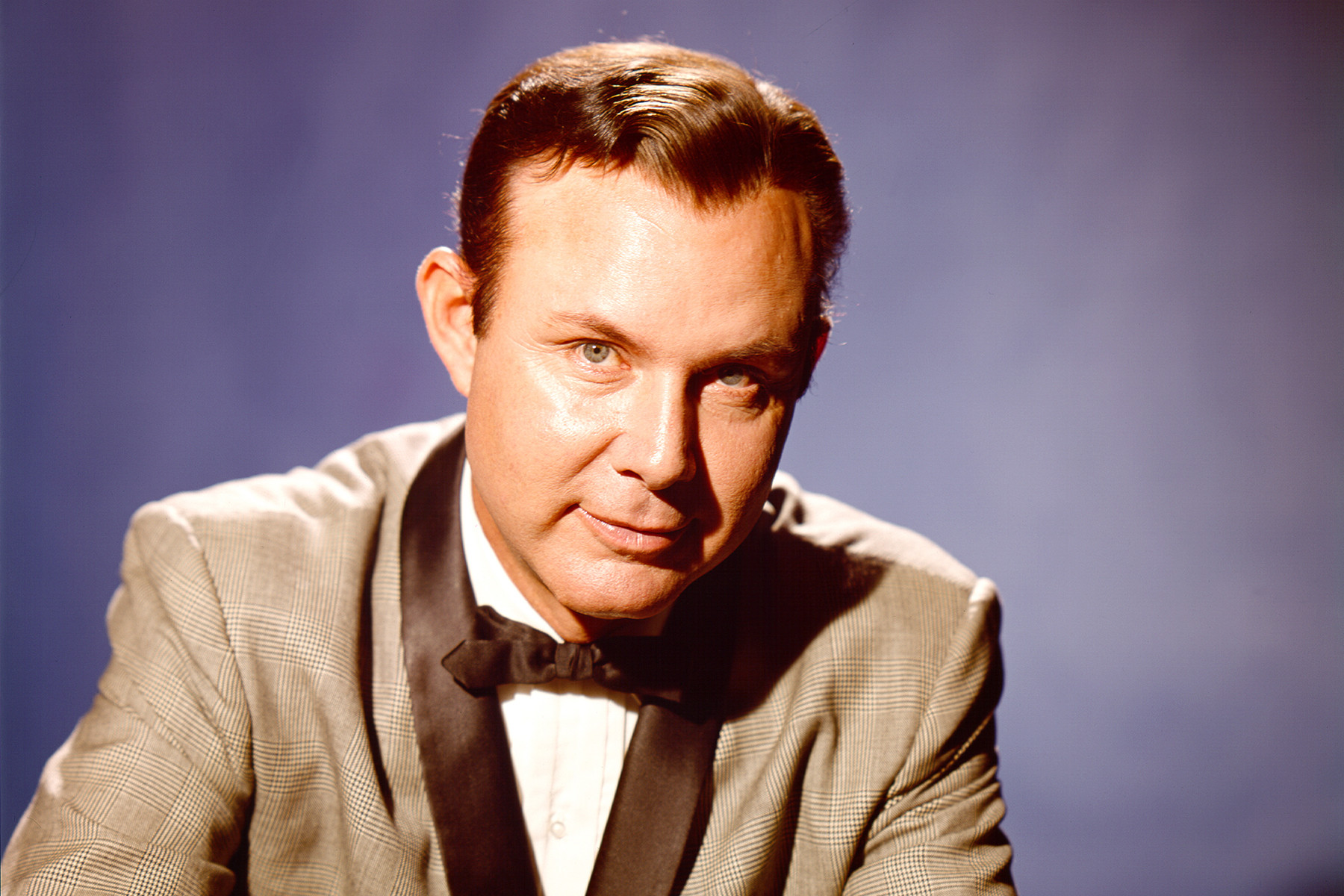 UNSPECIFIED – CIRCA 1970: Jim Reeves, known as Gentleman Jim, is pictured in a publicity portrait from circa 1970. (Image Credit: Michael Ochs Archives/Getty Images)
UNSPECIFIED – CIRCA 1970: Jim Reeves, known as Gentleman Jim, is pictured in a publicity portrait from circa 1970. (Image Credit: Michael Ochs Archives/Getty Images)
“He’ll Have to Go,” a dreamy and romantic lovers’ conversation set to music, became the biggest vocal hit of 1960. A classic example of the early Nashville Sound, the waltz tempo and prominent vibraphone intentionally mirrored the arrangement of an earlier version by rockabilly artist Billy Brown. However, it was the deep, velvety baritone voice of Gentleman Jim Reeves that propelled the song to widespread popularity. “I can’t really tell you what the reason for that tune’s popularity was, except that I get the very pathetic picture of the old fellow standing in the telephone booth, about half plastered, talking with his girl, asking her to run the other guy off,” Reeves once commented, offering a humorous take on the song’s appeal. “Makes for pretty good listening though, I guess.” “He’ll Have to Go” is a quintessential example of the smooth, sophisticated countrypolitan sound that Reeves helped popularize, and its romantic narrative continues to resonate with listeners.
Kenny Chesney, ‘The Good Stuff’
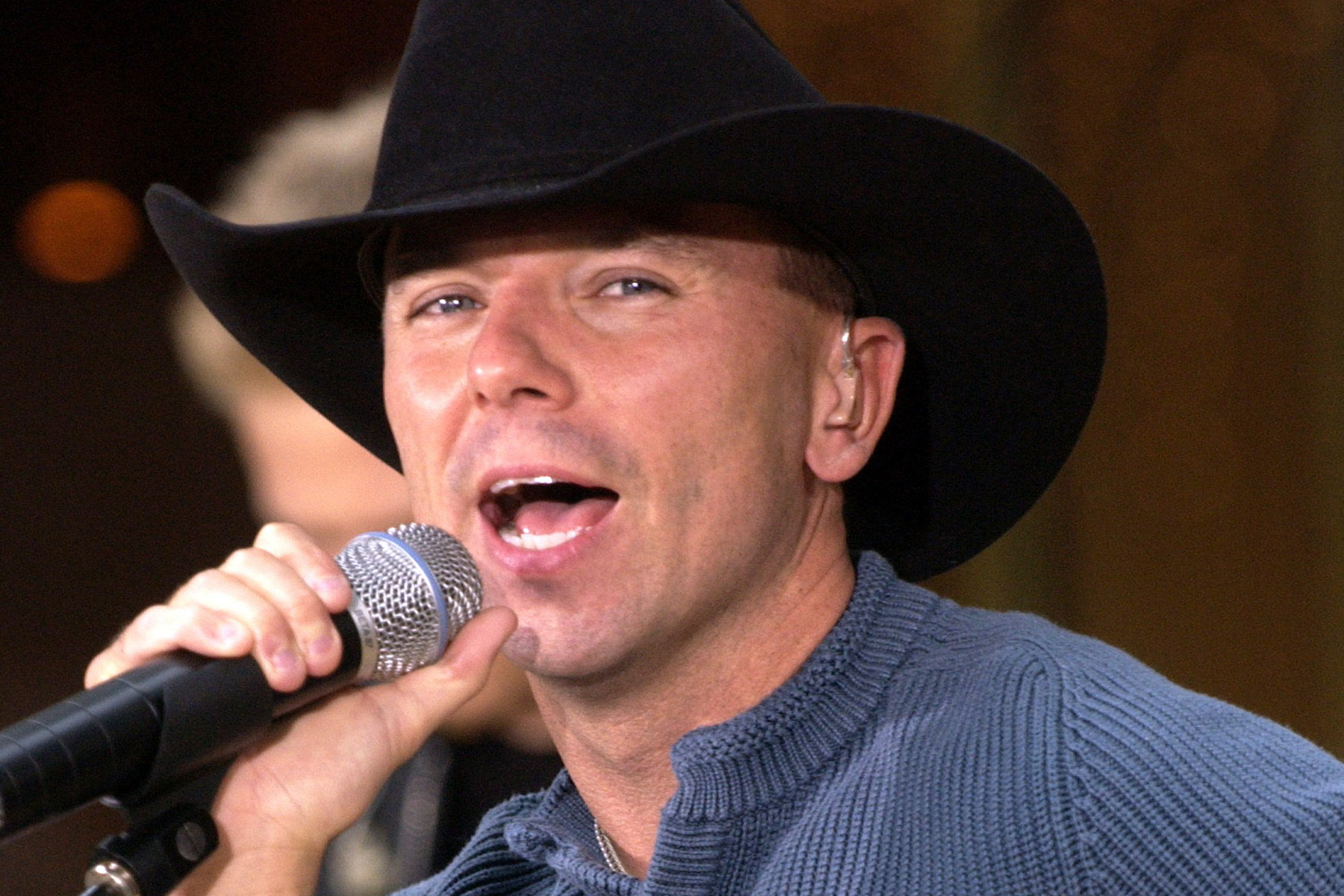 Kenny Chesney performs live in concert, engaging with his audience and showcasing his popular country anthems. (Image Credit: Debra L Rothenberg/FilmMagic)
Kenny Chesney performs live in concert, engaging with his audience and showcasing his popular country anthems. (Image Credit: Debra L Rothenberg/FilmMagic)
“The Good Stuff” opens with a newlywed couple having their first argument, leading the husband to seek refuge in a bar. However, instead of ordering a strong drink and commiserating with the bartender, he is unexpectedly served a glass of milk. Kenny Chesney skillfully layers multiple meanings into the title phrase: “The Good Stuff” could refer to a stiff drink, but it also symbolizes the truly meaningful moments in life. As the song progresses, it is revealed that the bartender lost his wife to cancer, and the enduring memory of her love is far more potent and comforting than any alcoholic beverage. Songwriters Craig Wiseman and Jim Collins penned “The Good Stuff” after a friend experienced the loss of his spouse to illness. “We were talking about, what if you just sat there and watched your wife die?” Wiseman later recalled. “We both just sat there and were sort of stunned for a minute. We said, ‘OK, let’s get a cup of coffee and write a song!’” “The Good Stuff” is a poignant exploration of grief, memory, and finding solace in unexpected places, demonstrating Chesney’s ability to convey emotional depth in his music.
Barbara Mandrell, ‘(If Loving You Is Wrong) I Don’t Want to Be Right’
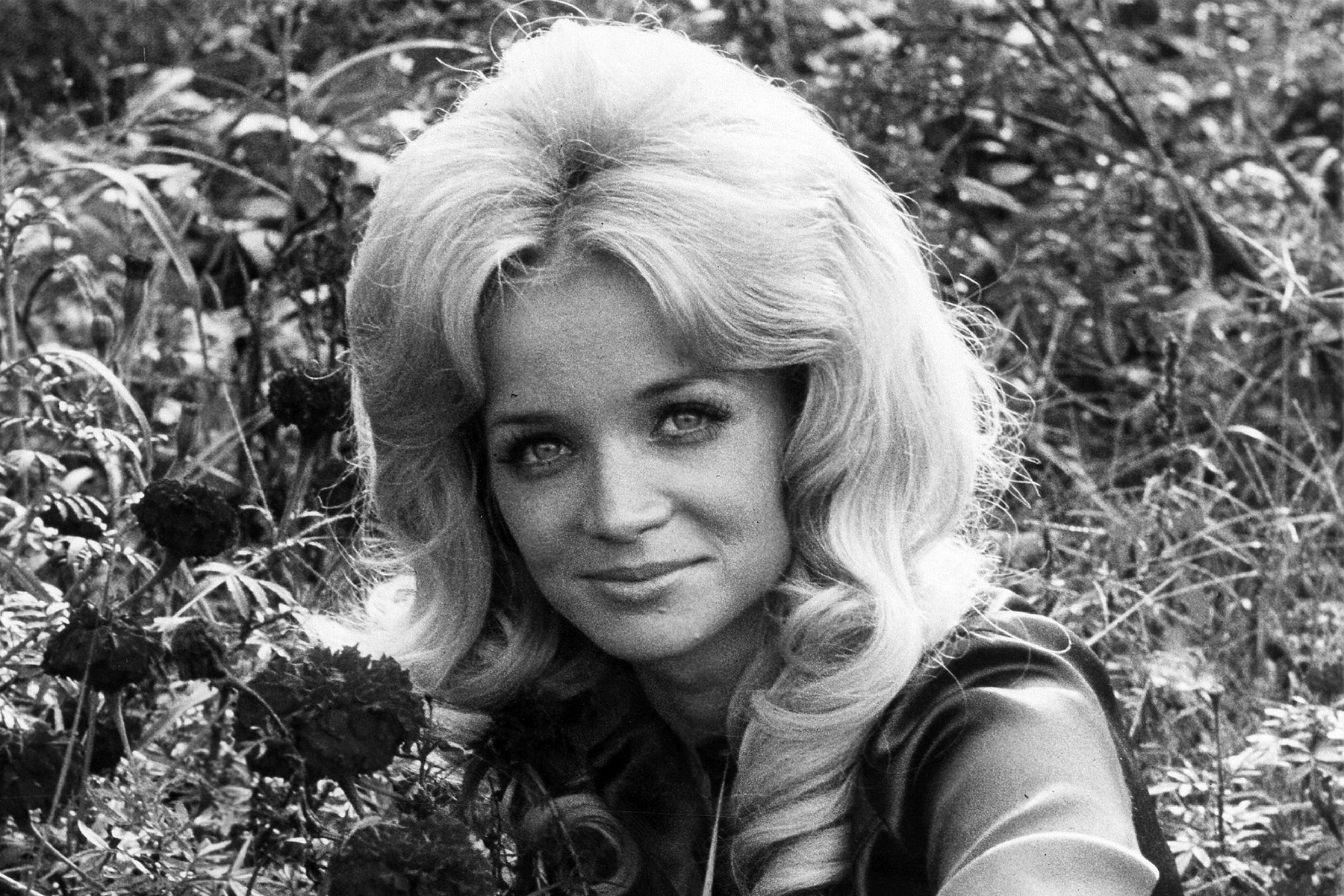 Barbara Mandrell, a versatile country entertainer, is pictured in a publicity portrait from circa 1970. (Image Credit: Michael Ochs Archives/Getty Images)
Barbara Mandrell, a versatile country entertainer, is pictured in a publicity portrait from circa 1970. (Image Credit: Michael Ochs Archives/Getty Images)
While not country music’s first foray into disco-influenced rhythms, Barbara Mandrell’s “(If Loving You Is Wrong) I Don’t Want to Be Right” is arguably one of the era’s most successful and artful adaptations, second only perhaps to Dolly Parton’s “Nine to Five.” Drummer Hayward Bishop masterfully incorporates disco’s signature “boom-swish” beat while resolutely maintaining a bouncy two-step rhythm, grounding the song in its country roots. The track itself has a Philly soul feel, with string arrangements that lean more towards Barry White than Billy Sherrill, yet it remains distinctly Nashville. The song, however, originated in Memphis as a 1972 soul hit for Luther Ingram on Stax Records. Barbara Mandrell, eight albums into her career and poised for major stardom, transformed this emotionally conflicted and overtly sensual lyric into a show-stopping performance, both subtle and intensely passionate. It became her biggest crossover hit, reaching the Billboard pop Top 40 and marking her only appearance there, demonstrating her ability to bridge country and pop audiences.
Florida Georgia Line, ‘Cruise’
 NASHVILLE, TN – OCTOBER 08: Florida Georgia Line's Brian Kelley and Tyler Hubbard perform at the BLA Party in Nashville, Tennessee. (Image Credit: Rick Diamond/Getty Images for IEBA)
NASHVILLE, TN – OCTOBER 08: Florida Georgia Line's Brian Kelley and Tyler Hubbard perform at the BLA Party in Nashville, Tennessee. (Image Credit: Rick Diamond/Getty Images for IEBA)
There was a time, not long ago, when the fusion of country and hip-hop was considered controversial, problematic, and even avant-garde. Florida Georgia Line’s “Cruise” embodied all of these descriptions and more. A quintessential high-summer love song, “Cruise” equally celebrates trucks, girls, and Florida Georgia Line themselves as objects of affection. Like a few other songs on this list, it initially faced accusations of “ruining country music.” FGL’s Brian Kelley responded to the “bro country” label on 60 Minutes, stating, “There’s no label that can really hurt our feelings.” However, a decade later, the twangy banjo that features prominently in the verses almost sounds traditional, and the jacked-up Silverado depicted in the music video even appears somewhat understated by contemporary standards. “Cruise” became a cultural phenomenon, pushing genre boundaries and significantly influencing the sound of modern country music, paving the way for further genre fusions and solidifying Florida Georgia Line’s place in country music history.
Mickey Guyton, ‘Black Like Me’
 NASHVILLE, TENNESSEE – SEPTEMBER 16: Mickey Guyton performs at the 55th Academy of Country Music Awards at the Grand Ole Opry in Nashville. (Image Credit: Kevin Mazur/ACMA2020/Getty Images for ACM)
NASHVILLE, TENNESSEE – SEPTEMBER 16: Mickey Guyton performs at the 55th Academy of Country Music Awards at the Grand Ole Opry in Nashville. (Image Credit: Kevin Mazur/ACMA2020/Getty Images for ACM)
Mickey Guyton is deeply rooted in country music tradition, yet she brings a vital and often unheard perspective as a Black woman within the genre. “Black Like Me” is her breakthrough ballad, powerfully mapping out her lived experiences. “If you think we live in the land of the free/You should try to be black like me,” she sings over mournful pedal-steel guitar, drawing out the R&B and Black church music elements that are inherently woven into country’s 21st-century DNA. The song had been unreleased for some time, but the murders of Ahmaud Arbery and George Floyd compelled Guyton to share fragments of it on social media. The response was immediate and overwhelming. Within a year, she performed “Black Like Me” at the Grammys – a historic moment as she became the first Black woman ever nominated for Best Country Solo Performance. While Guyton did not win, “Black Like Me” profoundly shifted the dialogue surrounding Black artists in country music, opening doors and inspiring a new generation of diverse voices within the genre.
Emmylou Harris, ‘Boulder to Birmingham’
 AMSTERDAM, NETHERLANDS: Emmylou Harris performs live in Amsterdam, Netherlands in 1975, captivating the audience with her vocals. (Image Credit: Gijsbert Hanekroot/Redferns)
AMSTERDAM, NETHERLANDS: Emmylou Harris performs live in Amsterdam, Netherlands in 1975, captivating the audience with her vocals. (Image Credit: Gijsbert Hanekroot/Redferns)
Emmylou Harris was on the cusp of major stardom and highly sought-after as a singer in Nashville when she released her sophomore album, Pieces of the Sky, in 1975. However, she was deeply burdened by grief. Her singing partner, mentor, and close friend Gram Parsons had tragically died a little over a year prior from a drug overdose. Harris channeled her profound heartache into “Boulder to Birmingham,” which became her signature song. “Words can be so powerful to help you express something you can’t otherwise,” she reflected years later. “And everyone has experienced loss.” While loss is a universal human experience, few have been able to articulate and express that sorrow as beautifully as Harris does in “Boulder to Birmingham.” Her raw and honest confession of grief, illuminated by her shimmering soprano voice, solidified her place as one of the most distinctive and unforgettable voices in country music.
Joe Diffie, ‘John Deere Green’
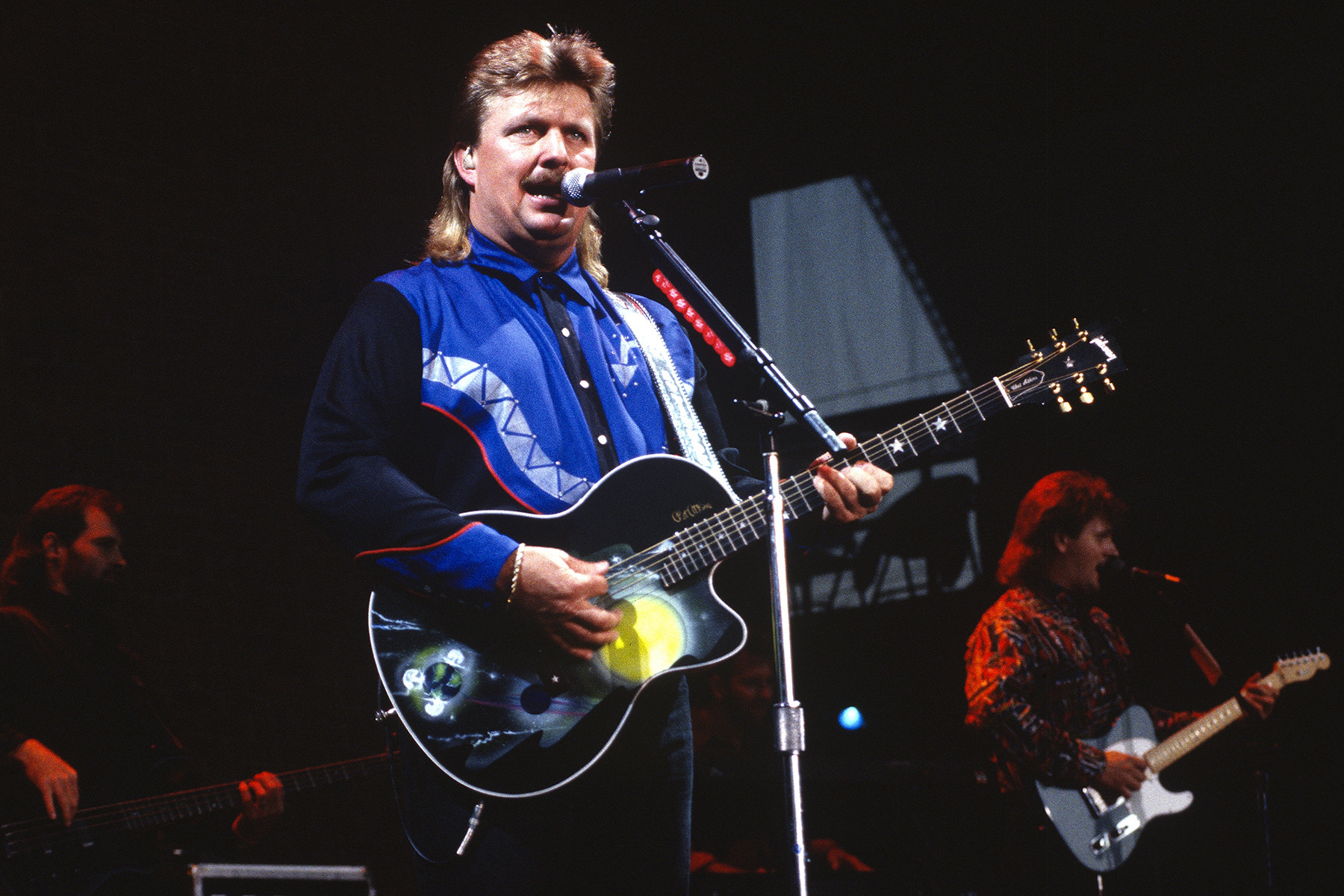 Joe Diffie performs at Shoreline Amphitheatre in Mountain View, California, on September 30, 1994, delivering his signature country sound. (Image Credit: Tim Mosenfelder/Getty Images)
Joe Diffie performs at Shoreline Amphitheatre in Mountain View, California, on September 30, 1994, delivering his signature country sound. (Image Credit: Tim Mosenfelder/Getty Images)
Joe Diffie, the Oklahoma-born singer, delivered the quintessential small-town romance song with “John Deere Green,” penned by the legendary songwriter Dennis Linde. It’s a gem of country storytelling, where Billy Bob declares his love for Charlene by painting their names inside a massive 10-foot heart on the town’s water tower. The detail of the tractor-themed color is what truly makes the song memorable, captured in the hook: “The whole town said that he should’ve used red/But it looked good to Charlene, in John Deere green.” In March 2020, Diffie tragically became one of the first musicians to succumb to the Covid-19 pandemic at just 61 years old. However, he left behind a rich legacy of country classics, including “Honky Tonk Attitude,” “Pickup Man,” and “Bigger Than the Beatles.” “John Deere Green” remains one of his most beloved songs, perfectly capturing the spirit of small-town romance and the enduring appeal of classic country storytelling.
Conway Twitty, ‘You’ve Never Been This Far Before’
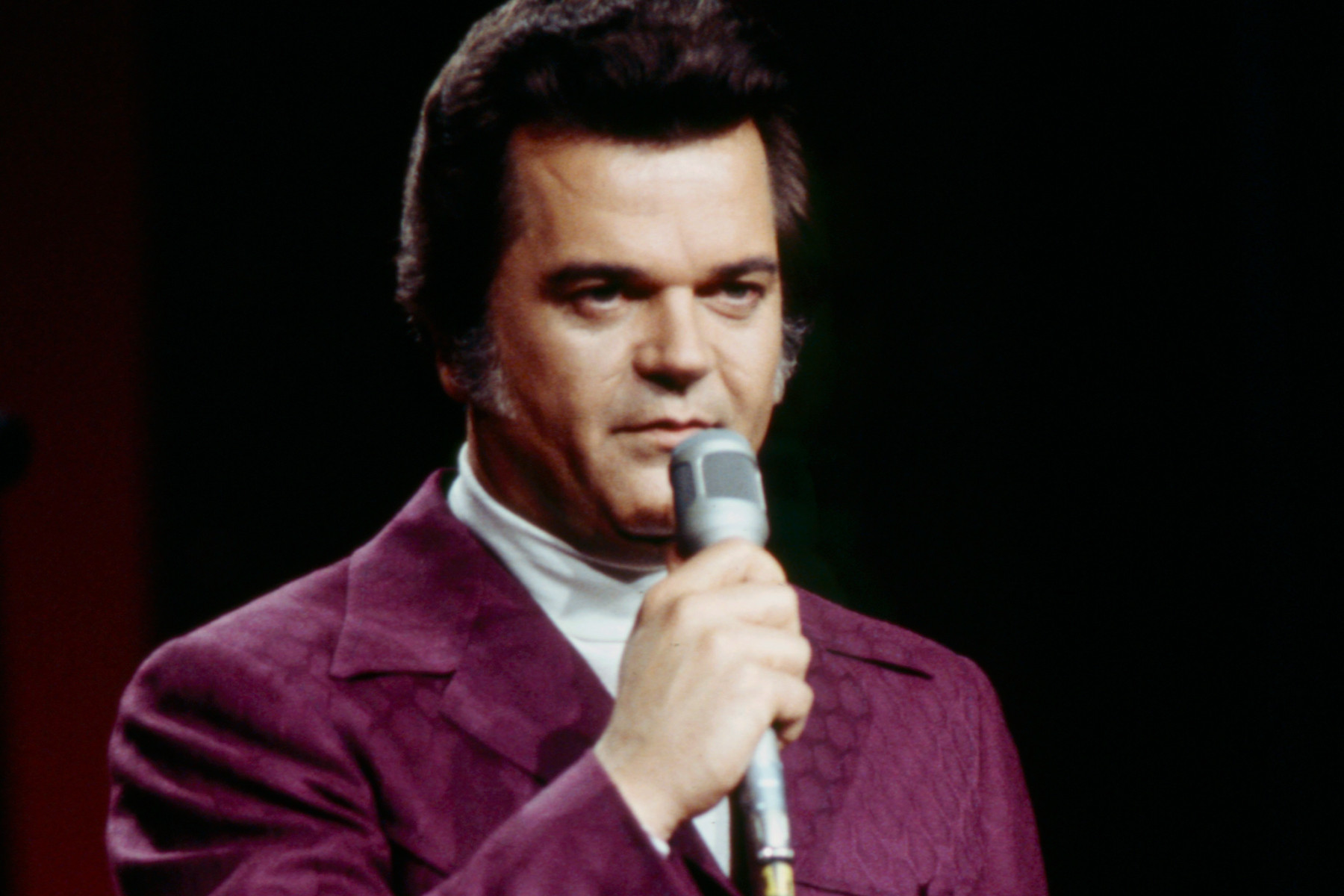 Conway Twitty performs on the ABC TV special "In Concert," circa 1974, captivating audiences with his romantic ballads. (Image Credit: Disney General Entertainment Content/Getty Images)
Conway Twitty performs on the ABC TV special "In Concert," circa 1974, captivating audiences with his romantic ballads. (Image Credit: Disney General Entertainment Content/Getty Images)
Conway Twitty, initially a rock and roller, played a crucial role in transitioning Elvis Presley-style balladry into the country mainstream during the 1960s and 70s. He became known for singing about sex with a frankness and regularity that was unprecedented for country singers of his time. “You’ve Never Been This Far Before,” in which Twitty purrs about his “trembling fingers touch forbidden places,” was considered so suggestive that it faced brief boycotts from some radio stations. The song’s power lies in its understated and almost vulnerable sound. The throbbing electric bass is the most prominent instrument throughout much of the track, creating a sense of intimacy and tension. Twitty’s repeated “buh-buh-buh” vocalizations function both as a heartbeat-like rhythm and a memorable hook. “You’ve Never Been This Far Before” remains one of Conway Twitty’s most iconic and controversial hits, pushing boundaries for lyrical content in country music and solidifying his status as a genre innovator.
Conclusion:
This list of 200 best country songs offers a journey through the heart and soul of American music. From the early pioneers to contemporary innovators, these songs represent the diverse sounds and stories that define country music. They evoke a range of emotions, from joy and celebration to heartbreak and reflection, and they continue to resonate with listeners across generations. Exploring these best country songs is not just a listening experience; it’s an exploration of American culture, history, and the enduring power of music to tell our stories.

